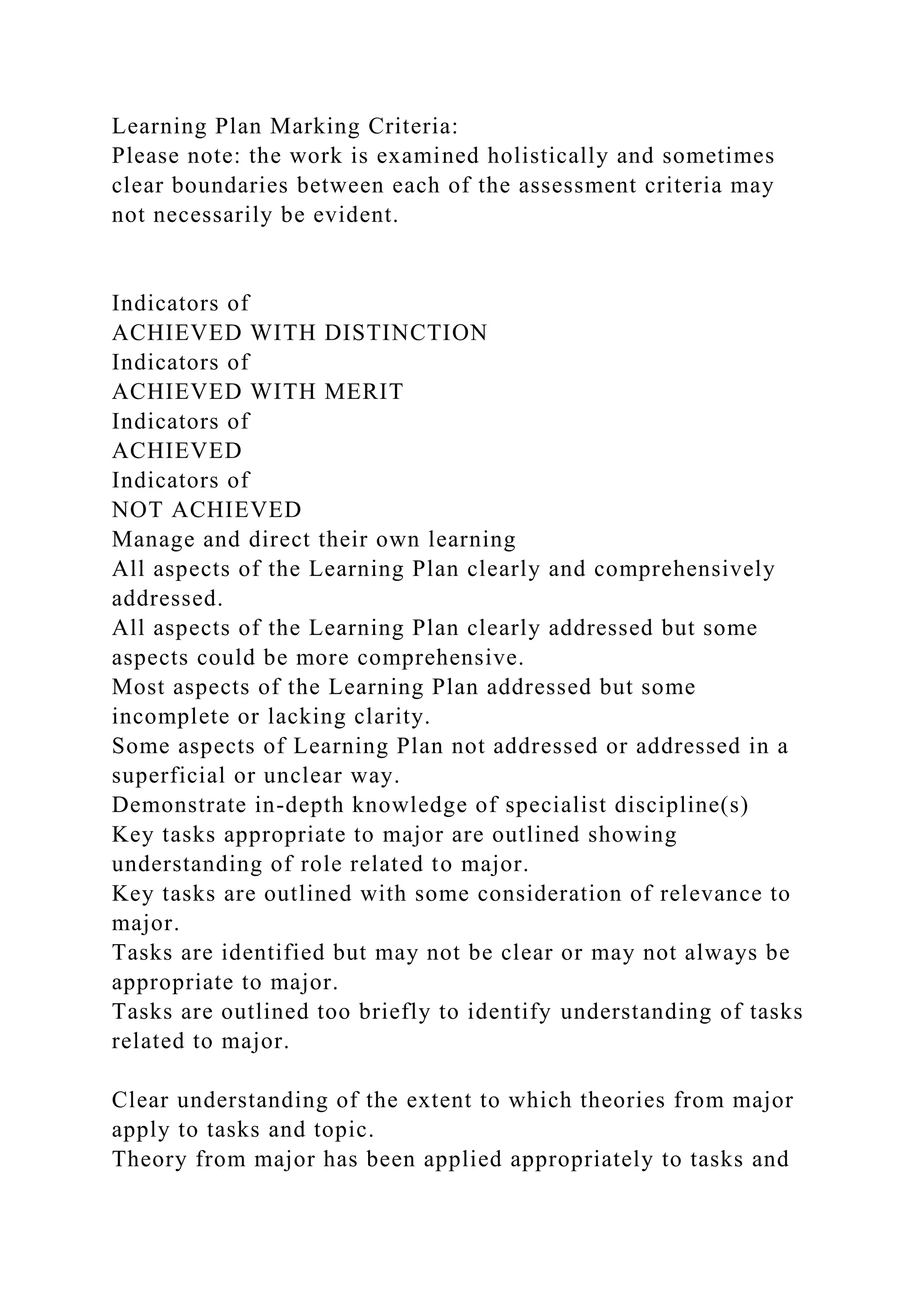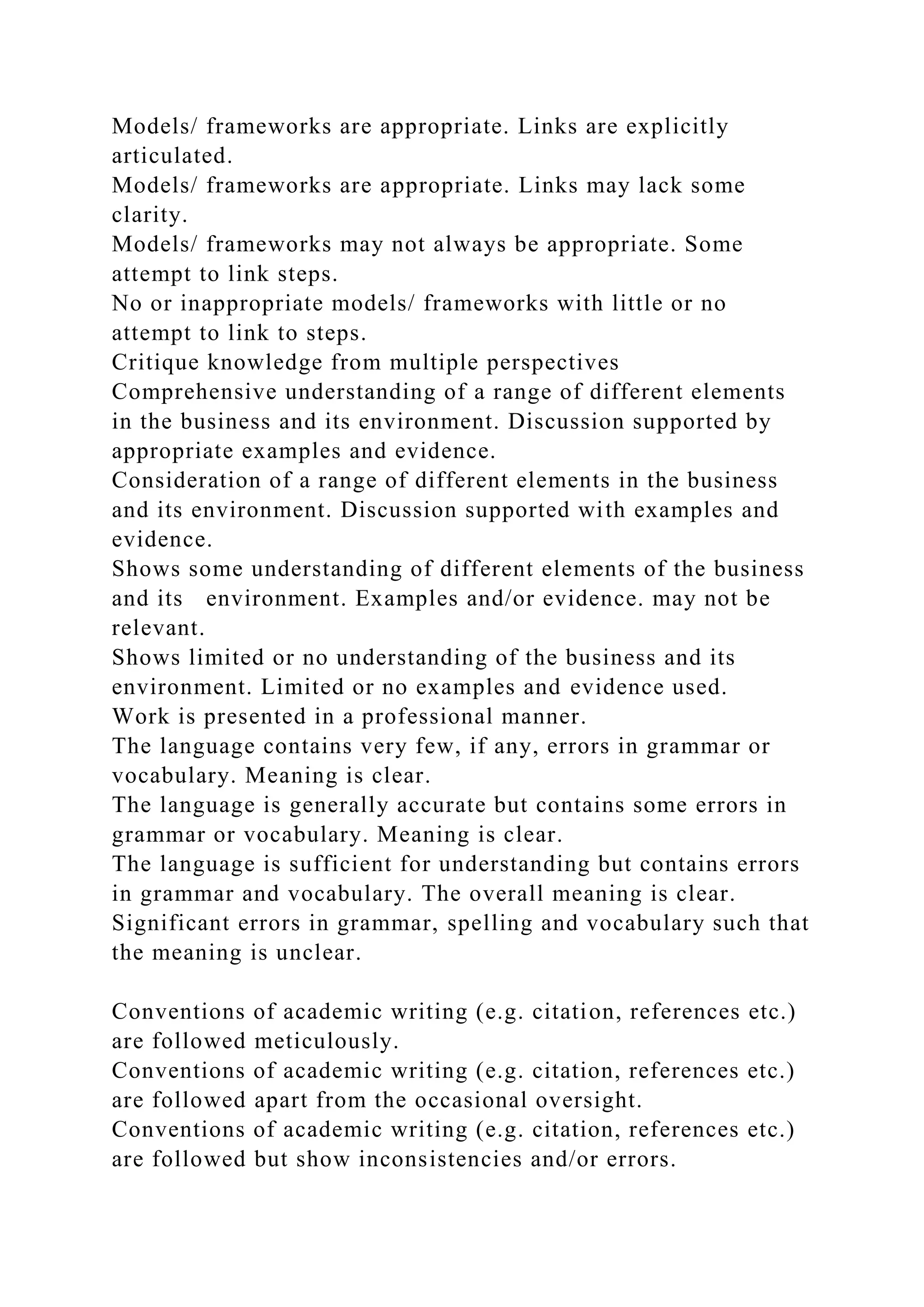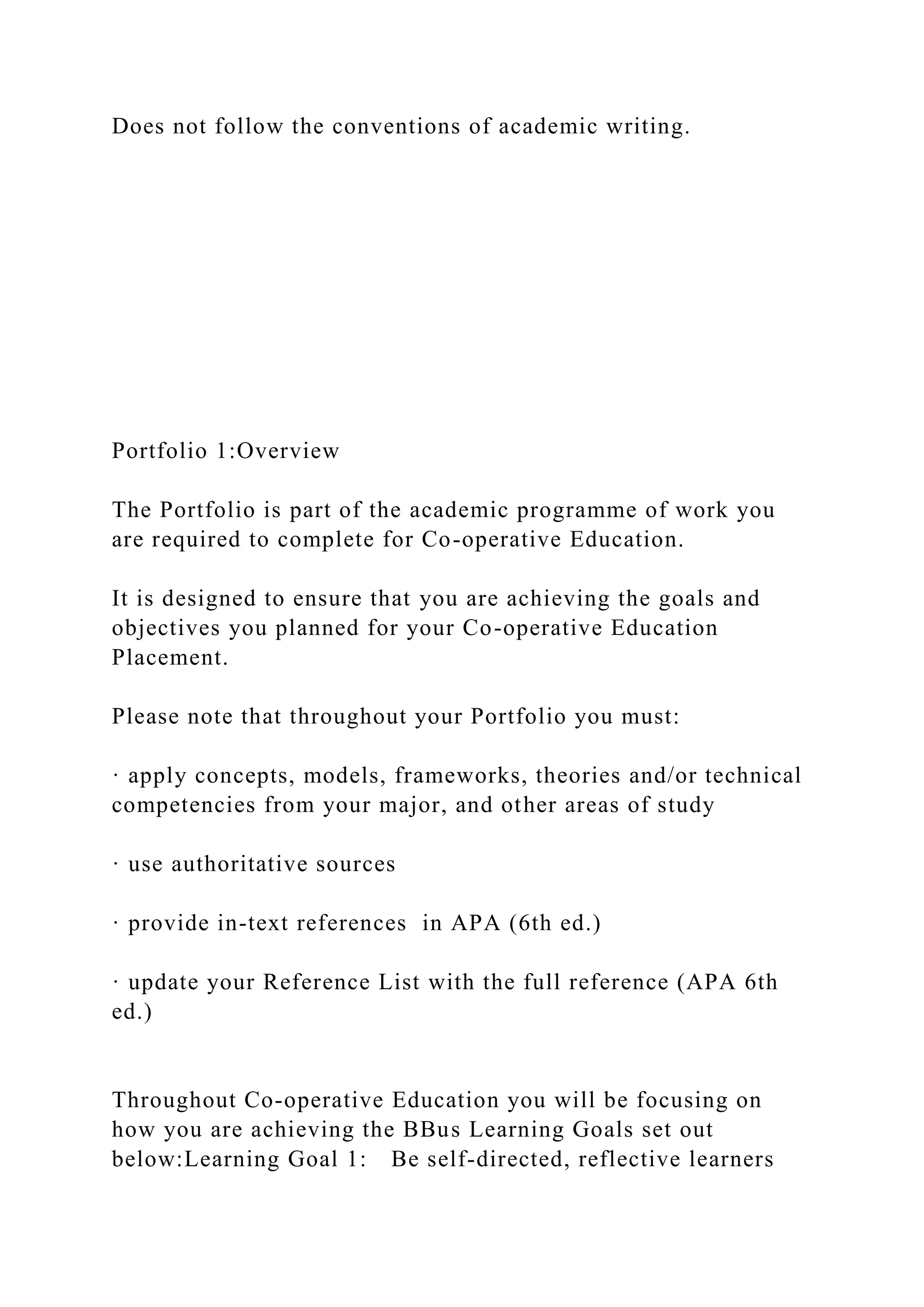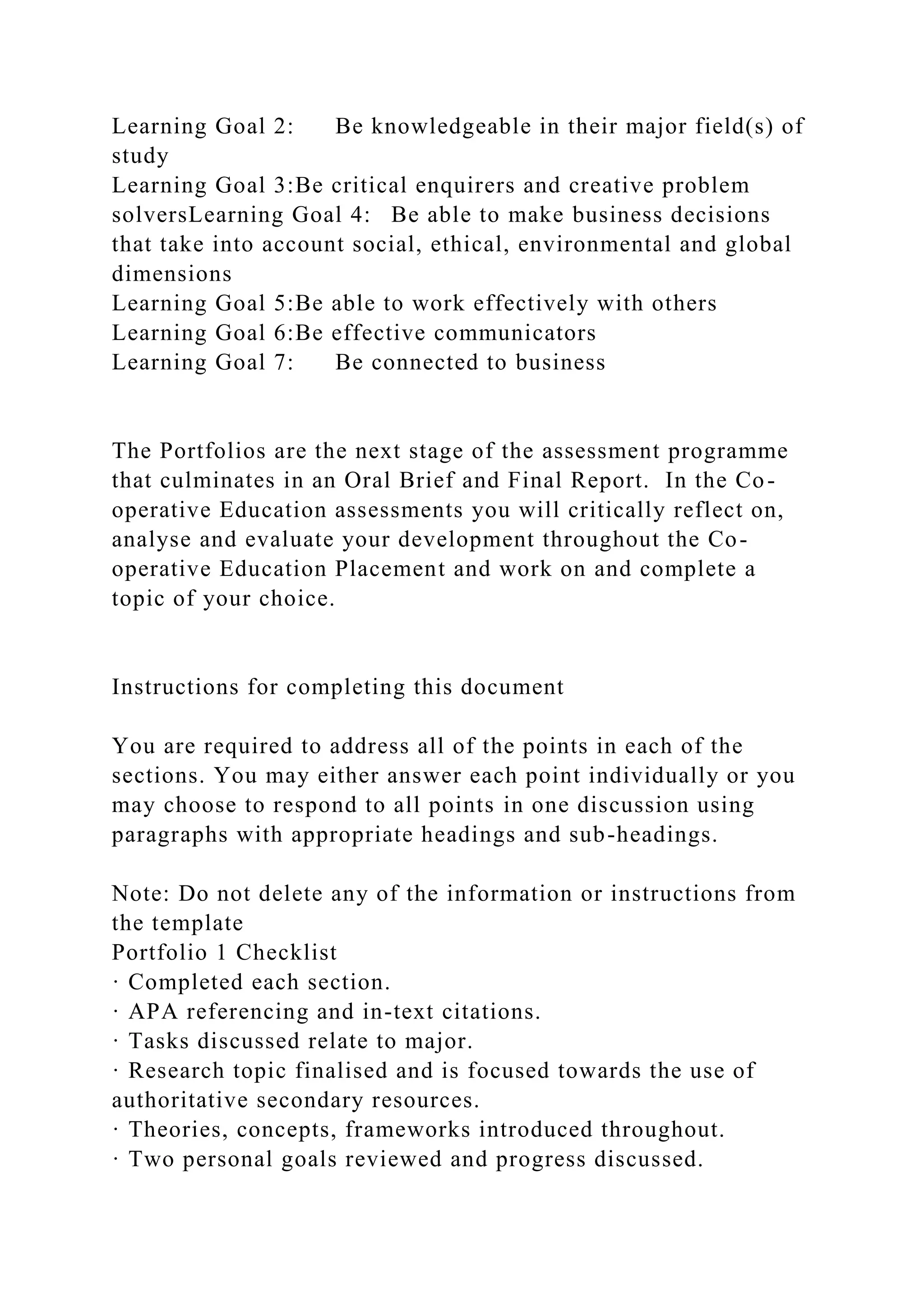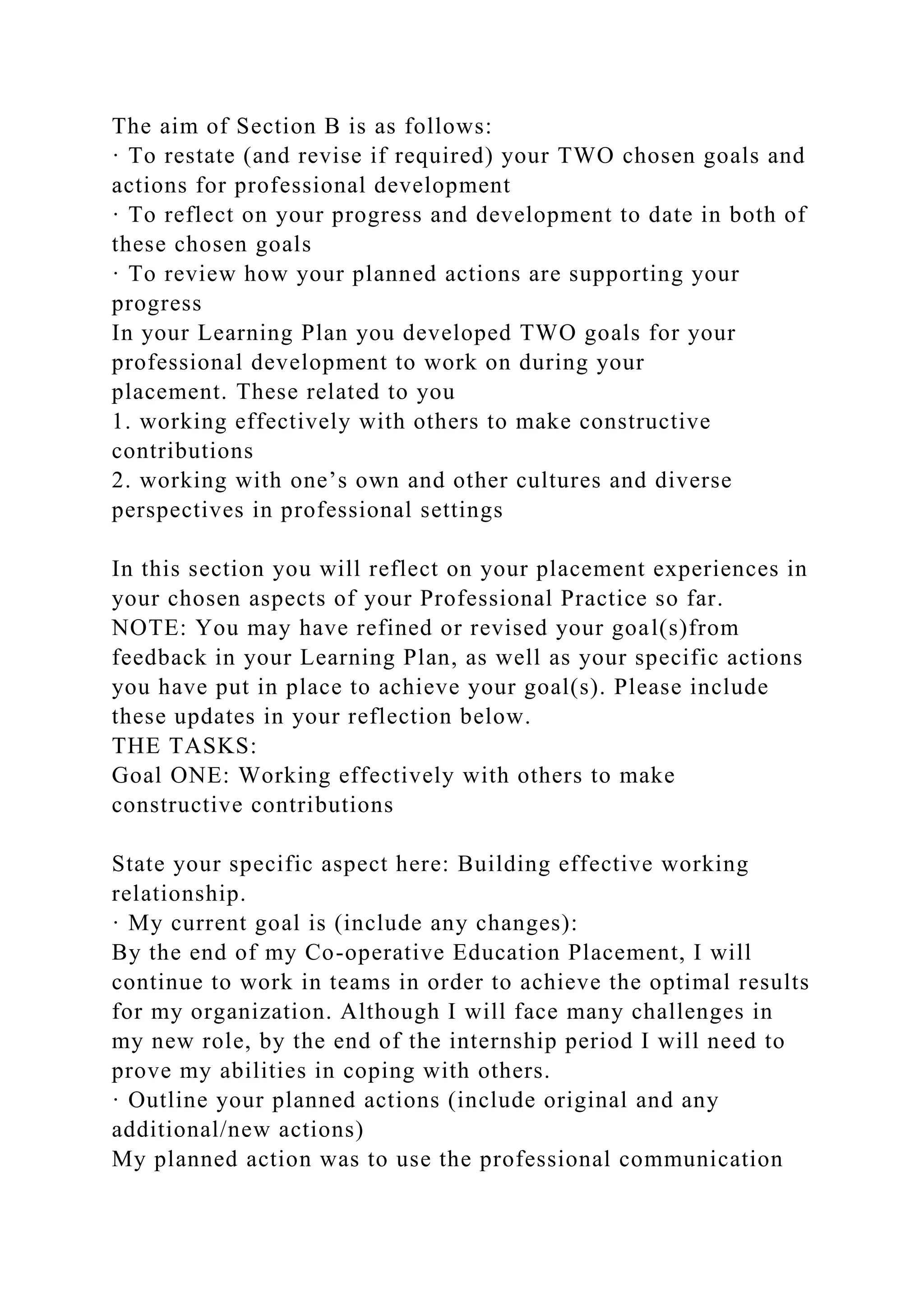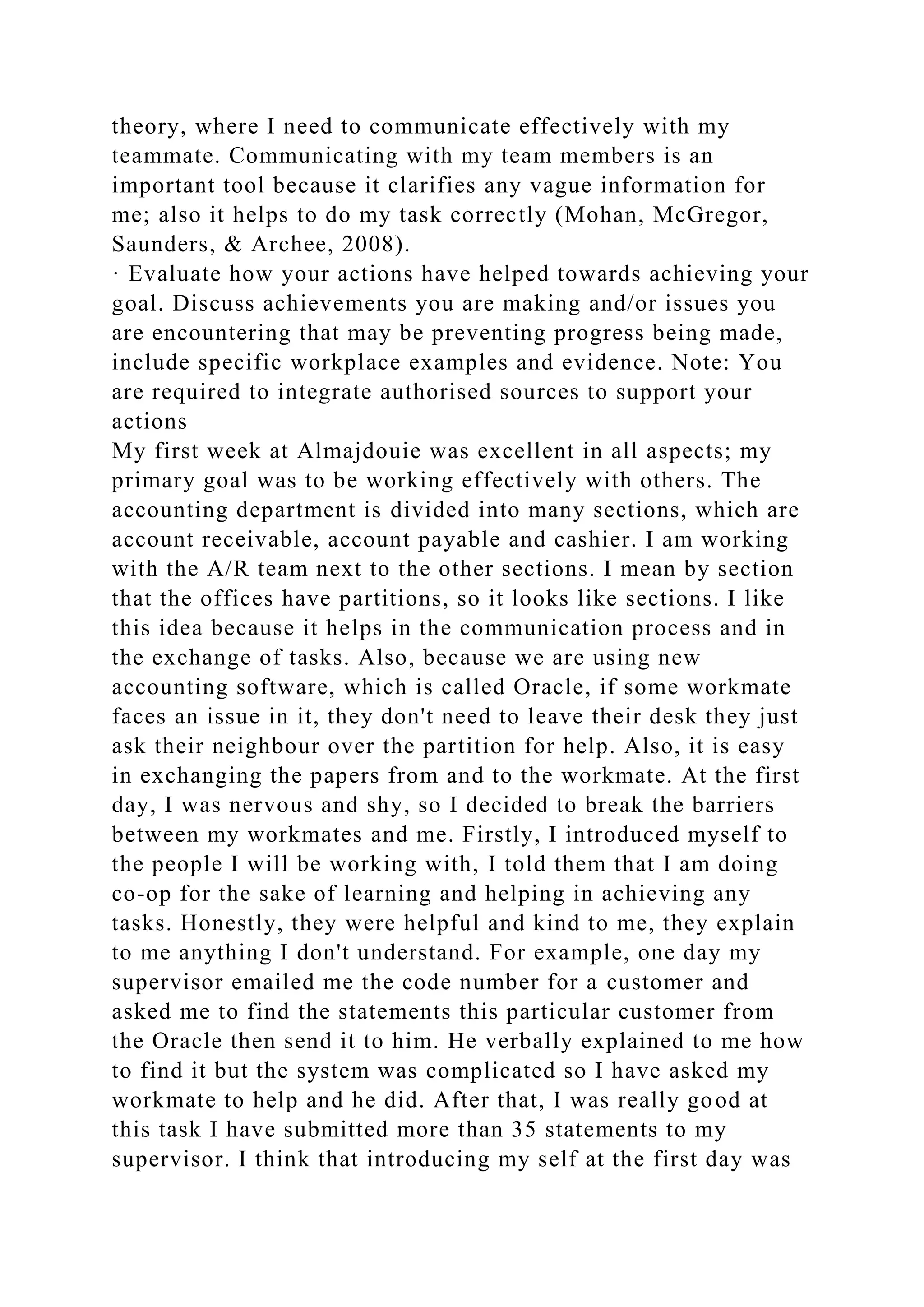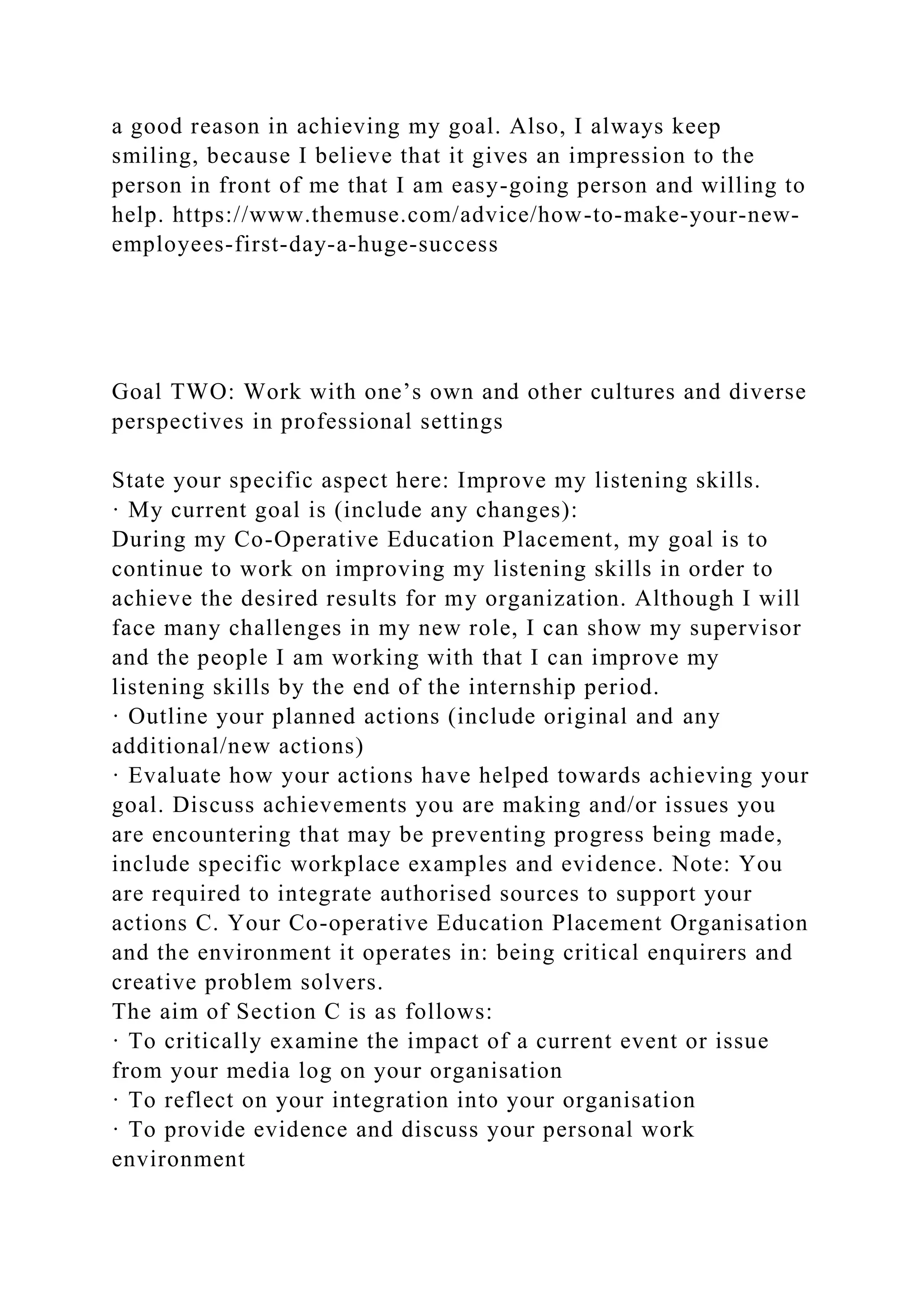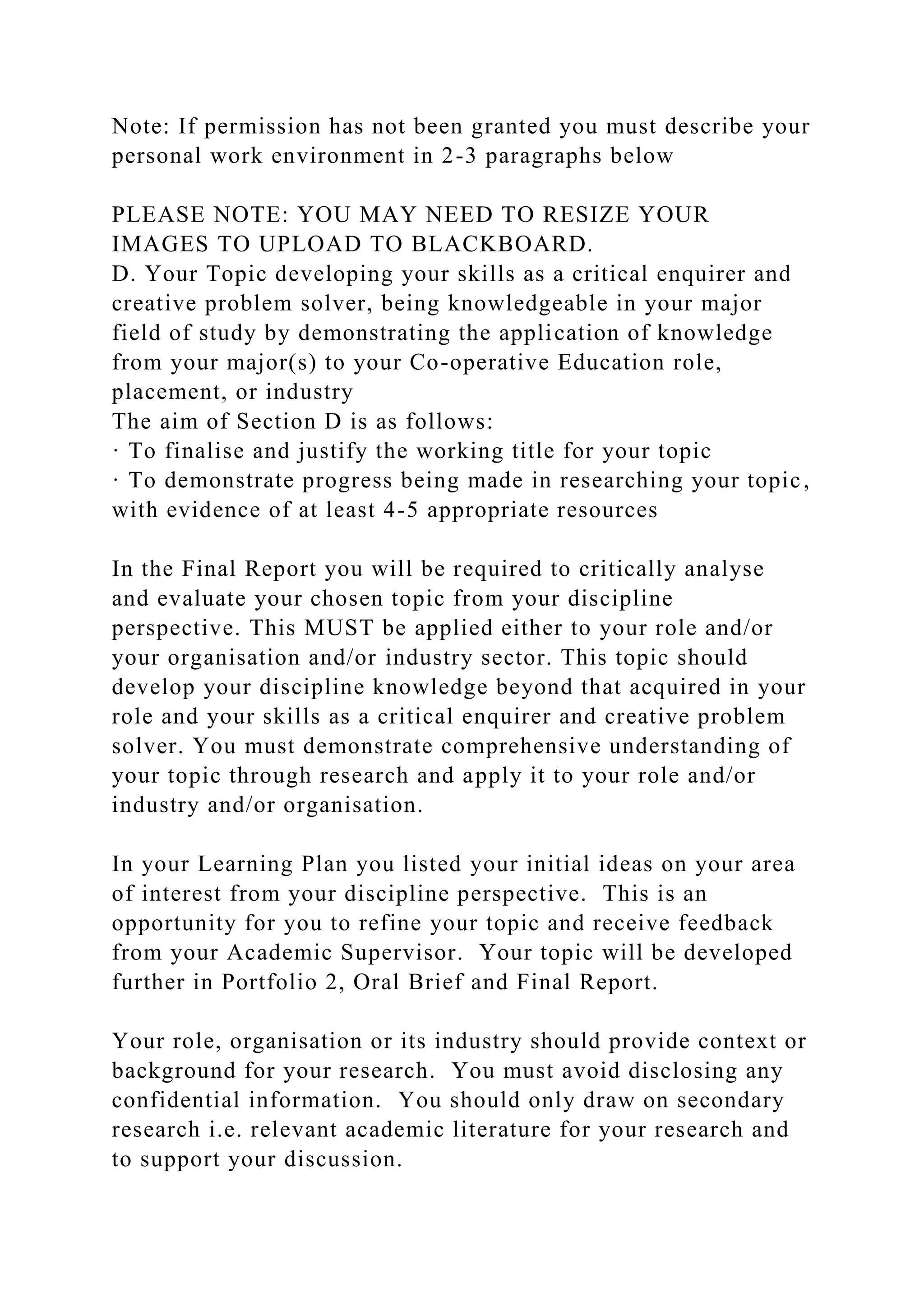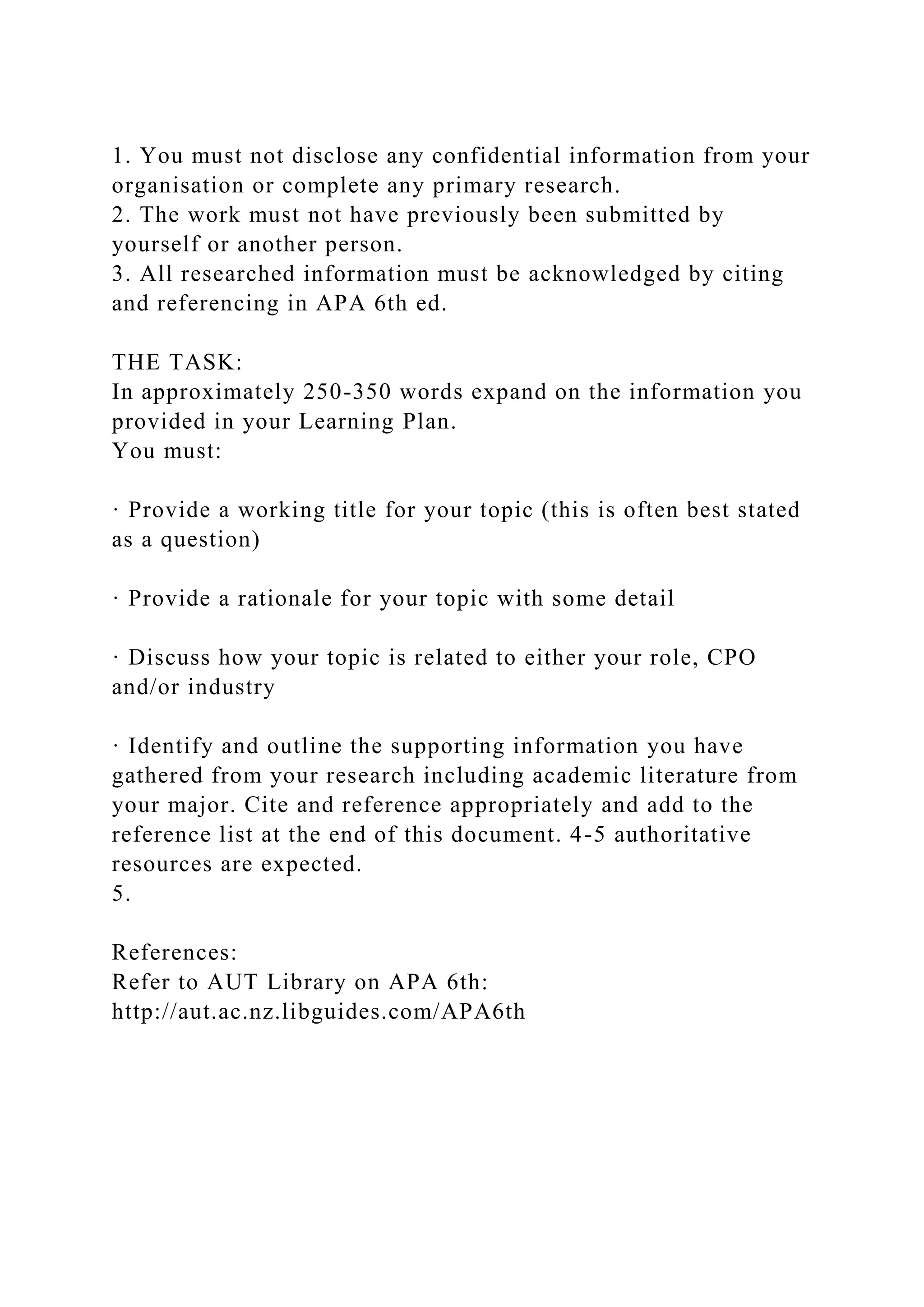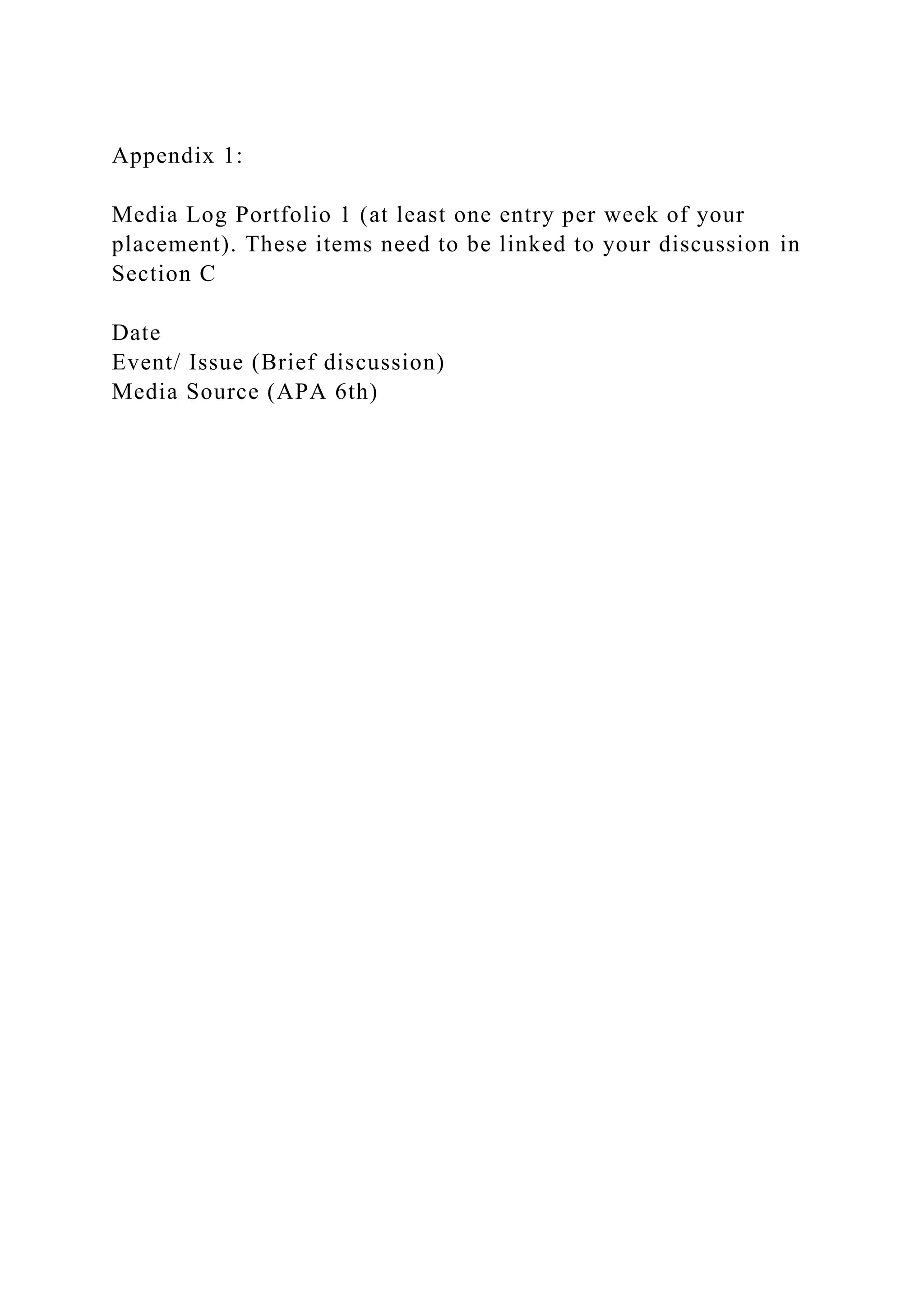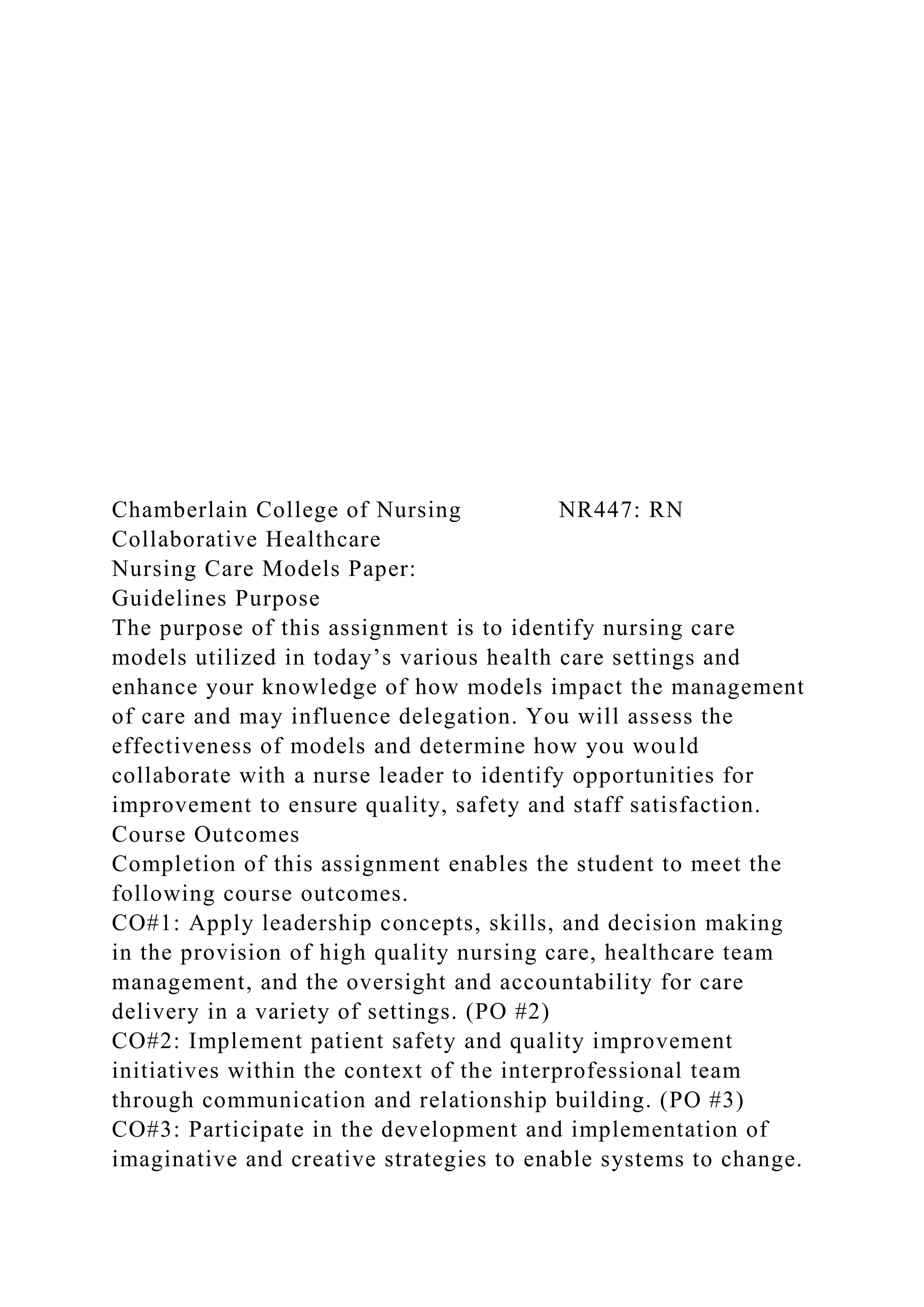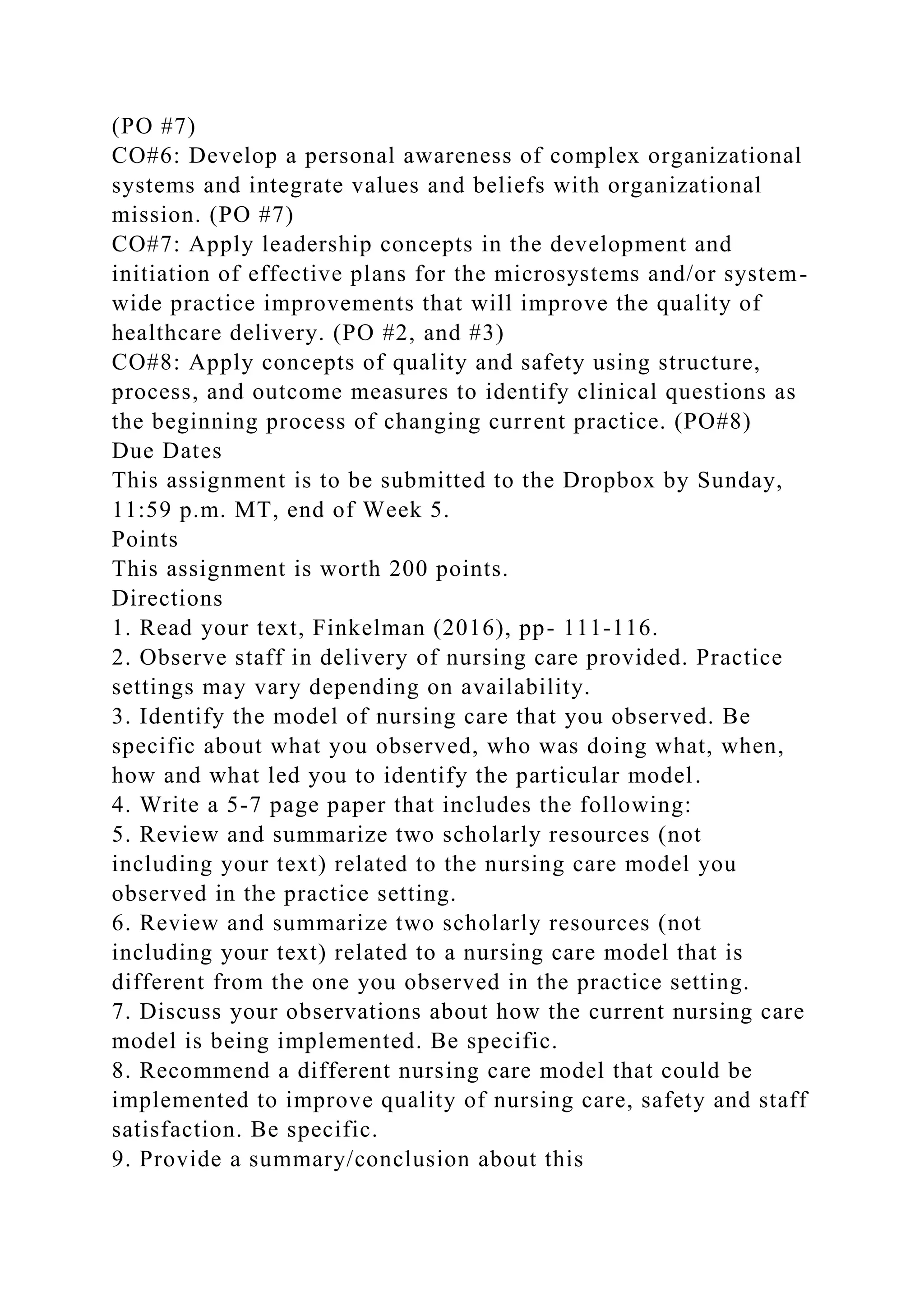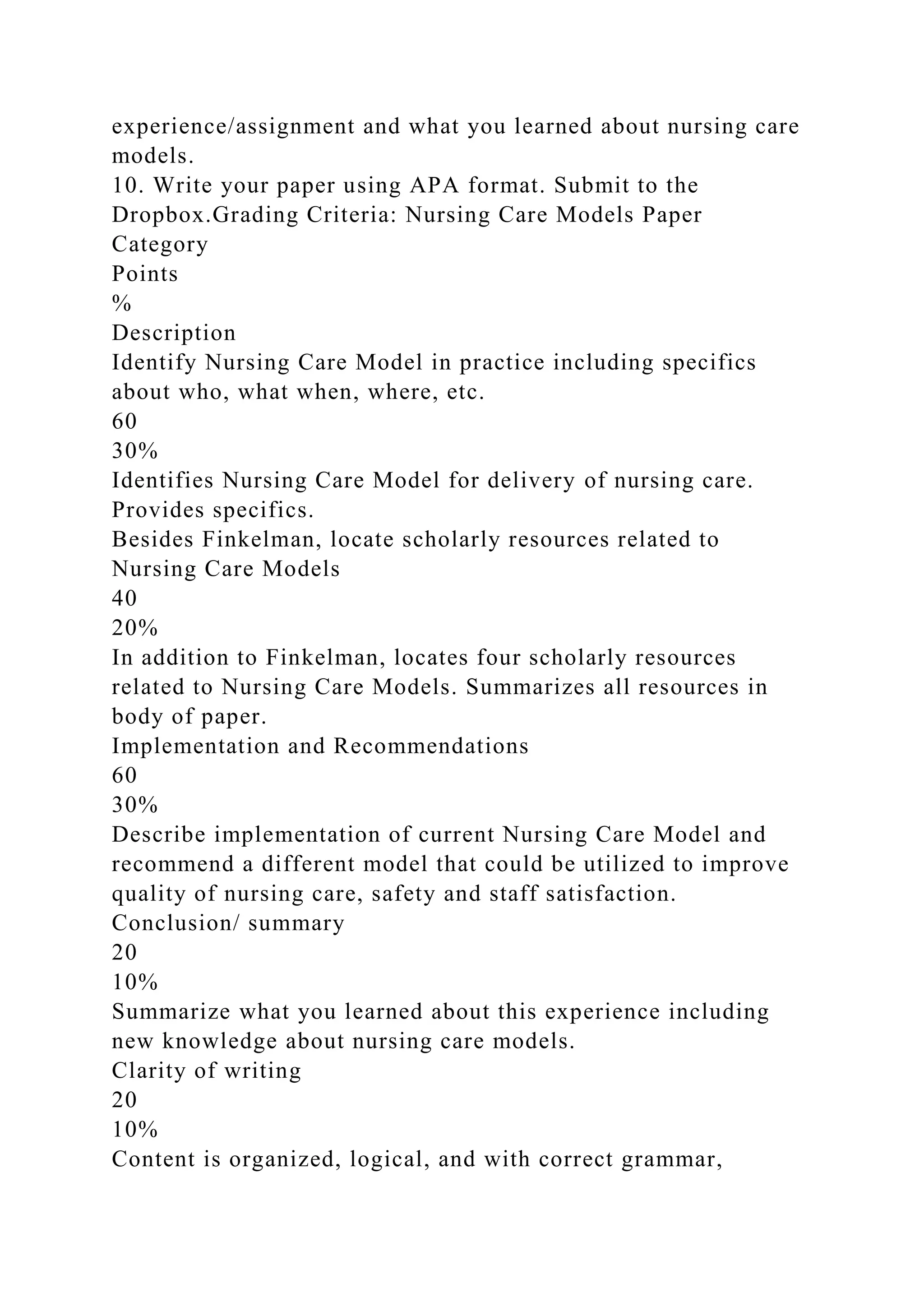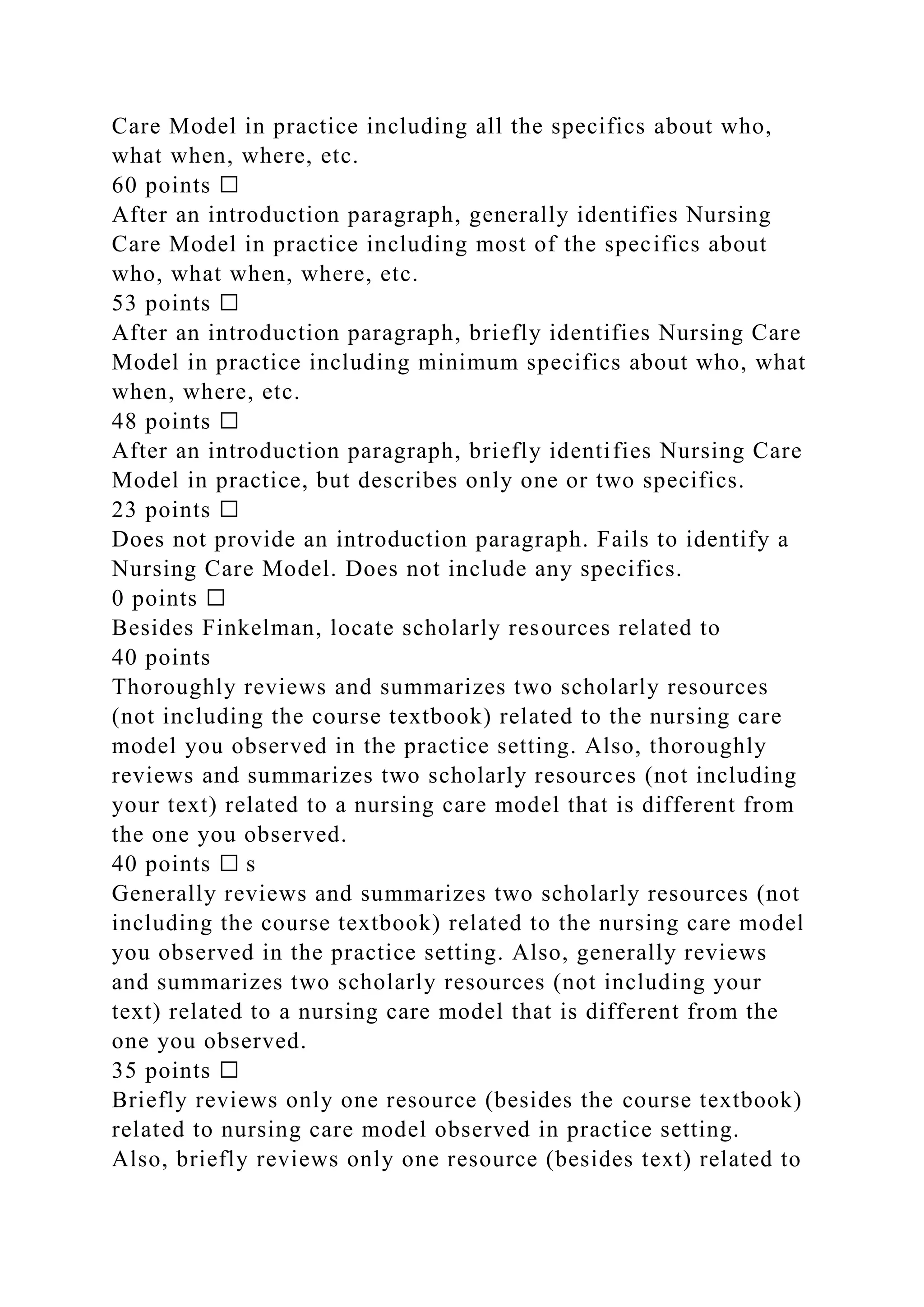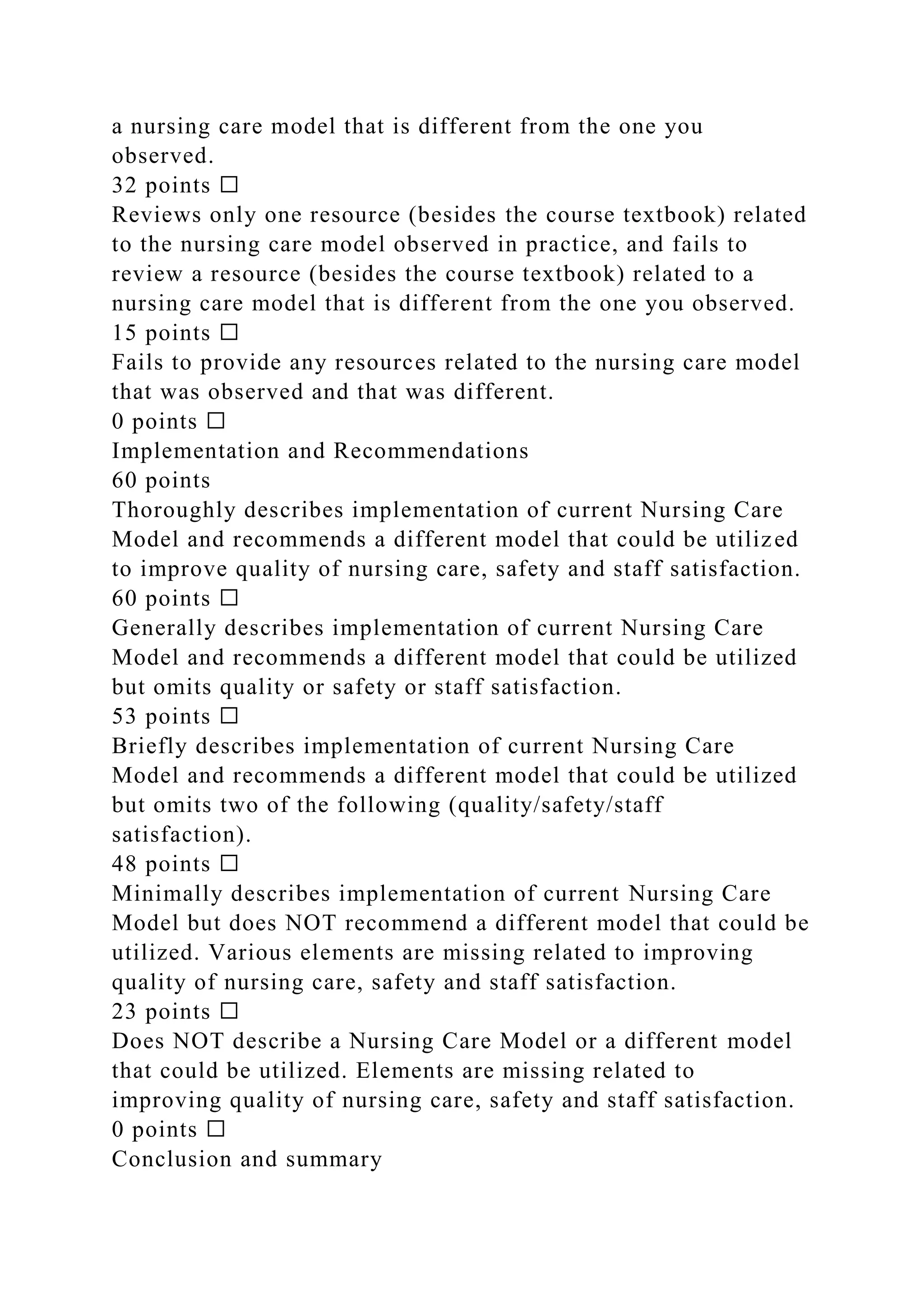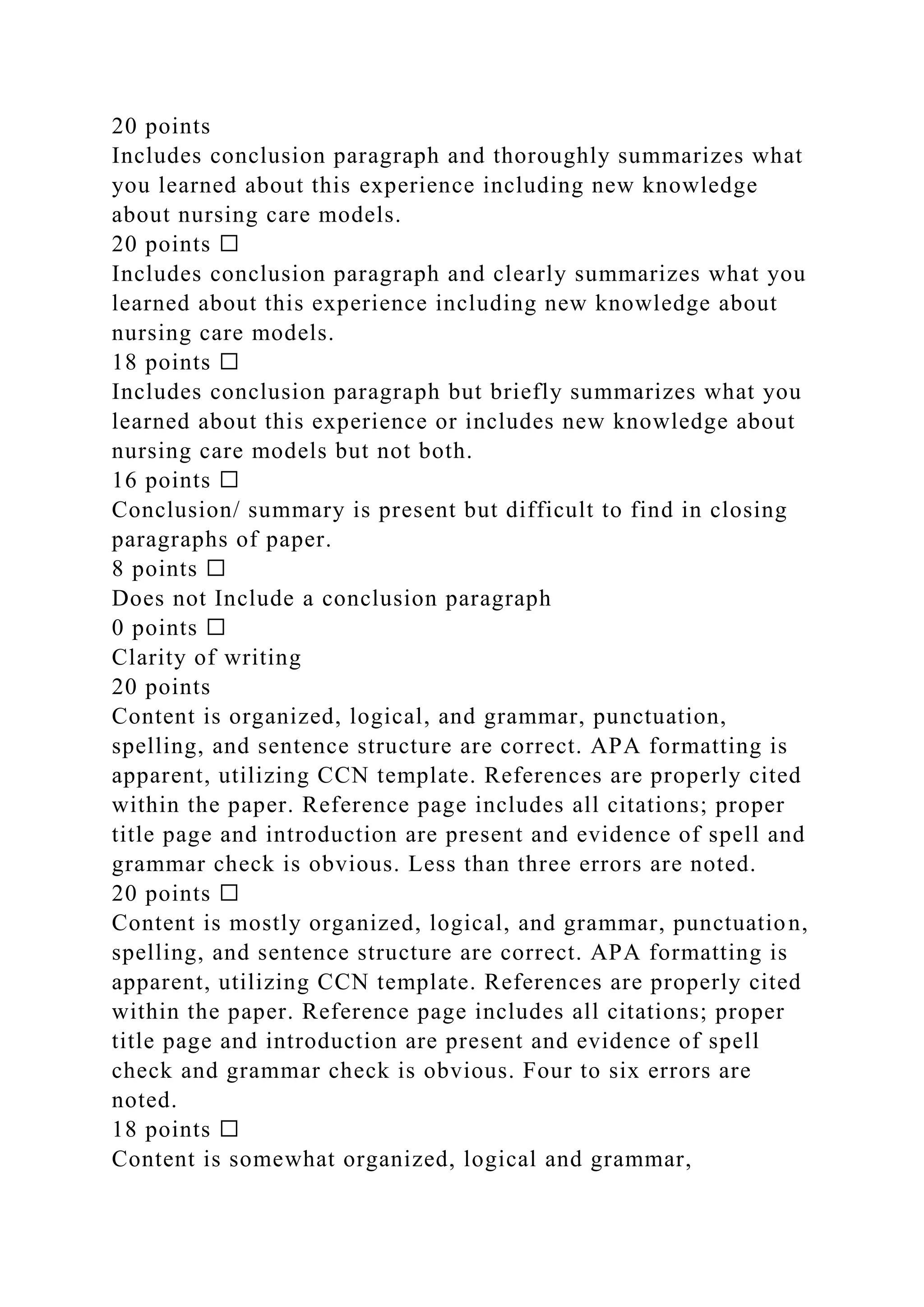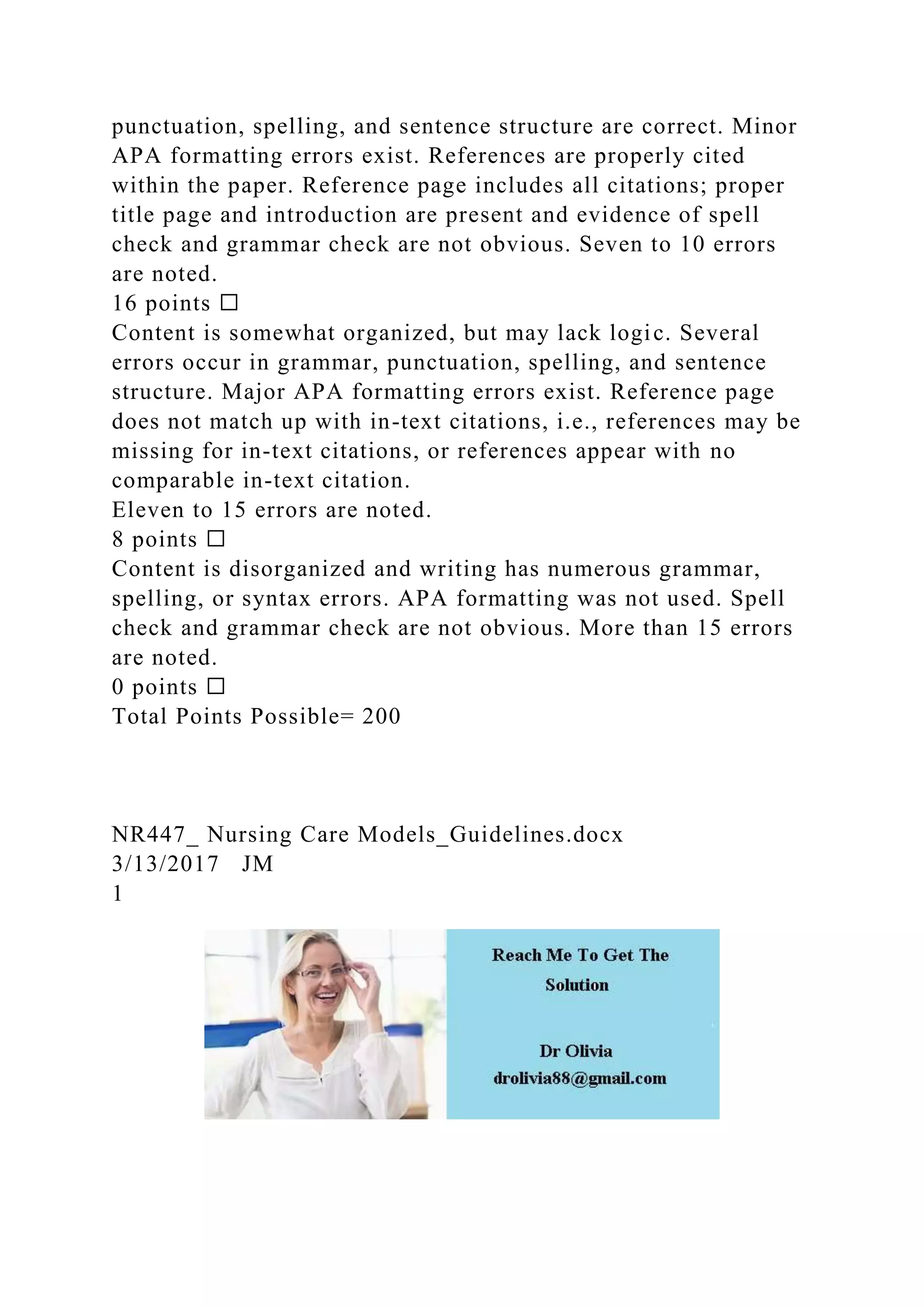The document outlines a learning plan for co-operative education aimed at setting academic and personal development goals for students. It emphasizes the need for self-reflection, application of knowledge from major fields, and assessment of progress through various tasks, including a SWOT analysis and personal goals related to teamwork and listening skills. Students are expected to integrate theoretical concepts into their work placements while maintaining proper APA referencing throughout their learning plan.

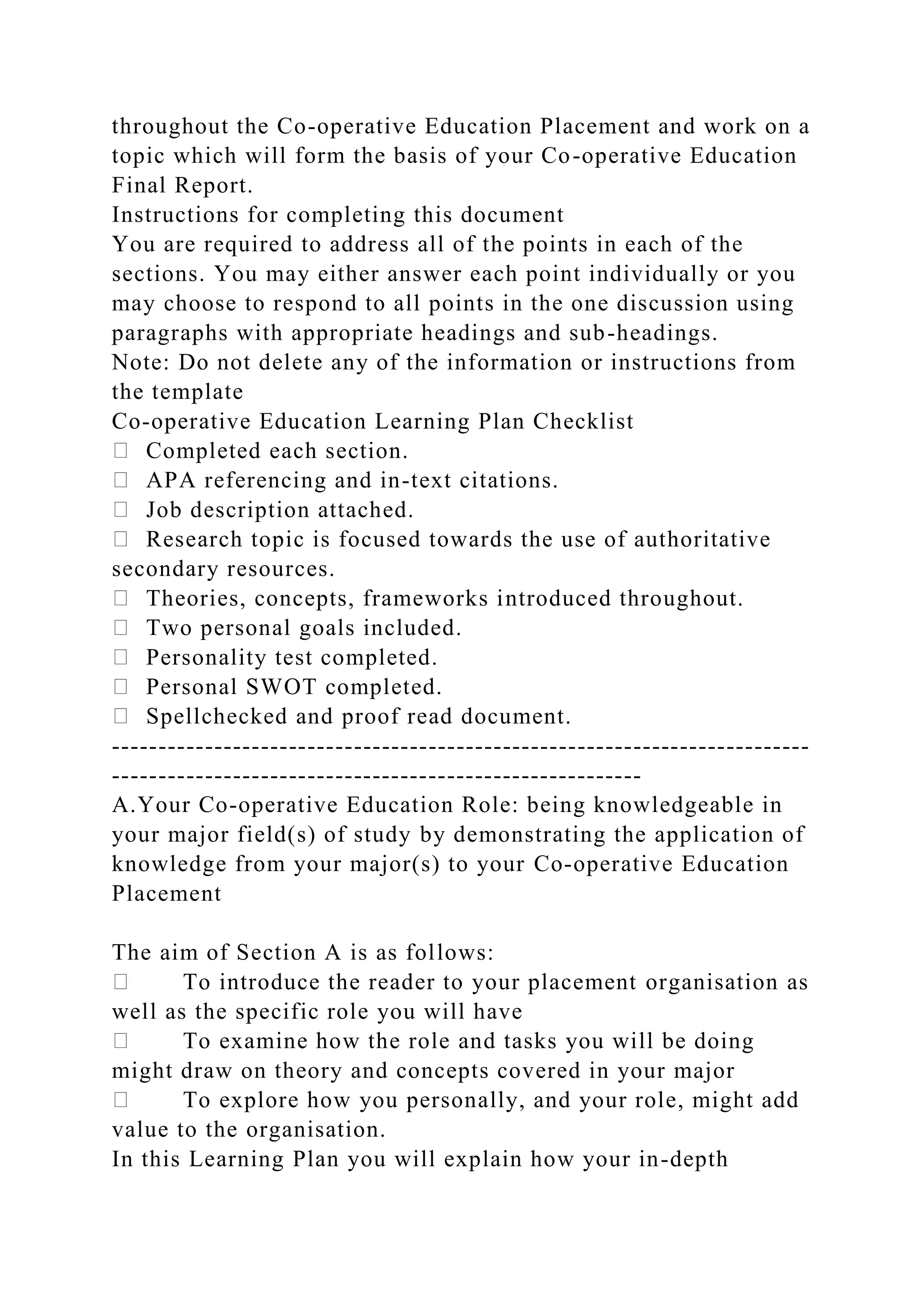
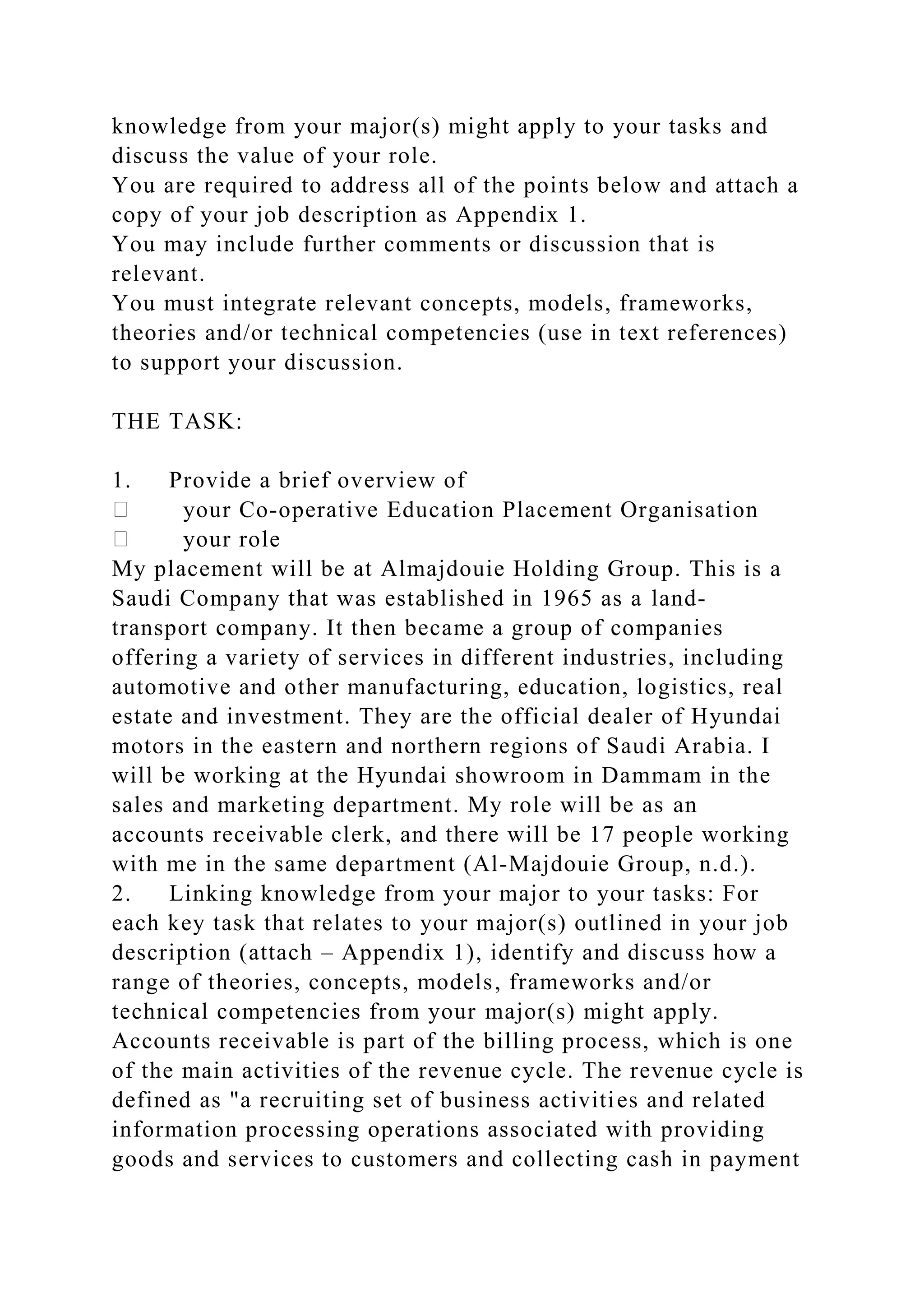

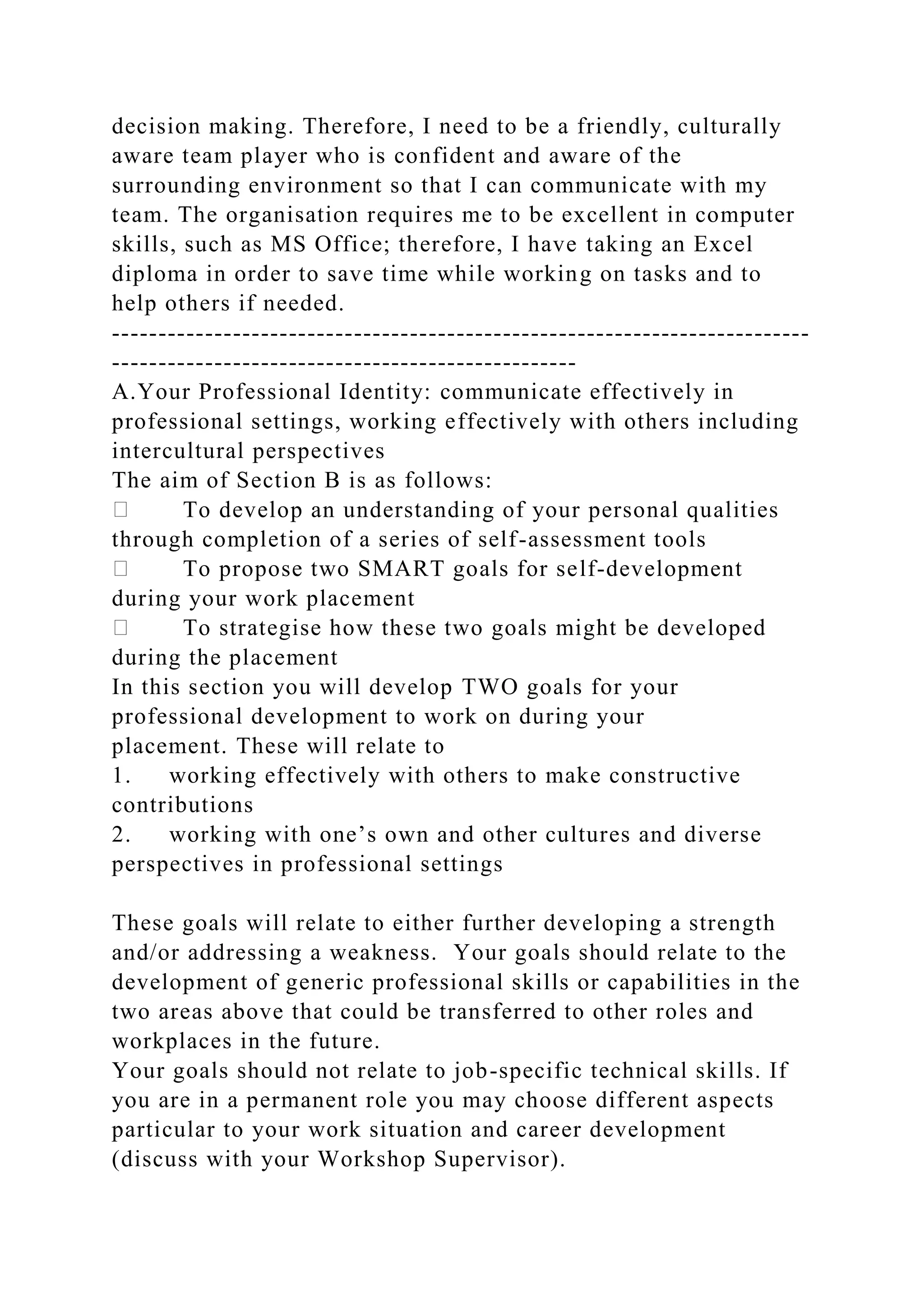
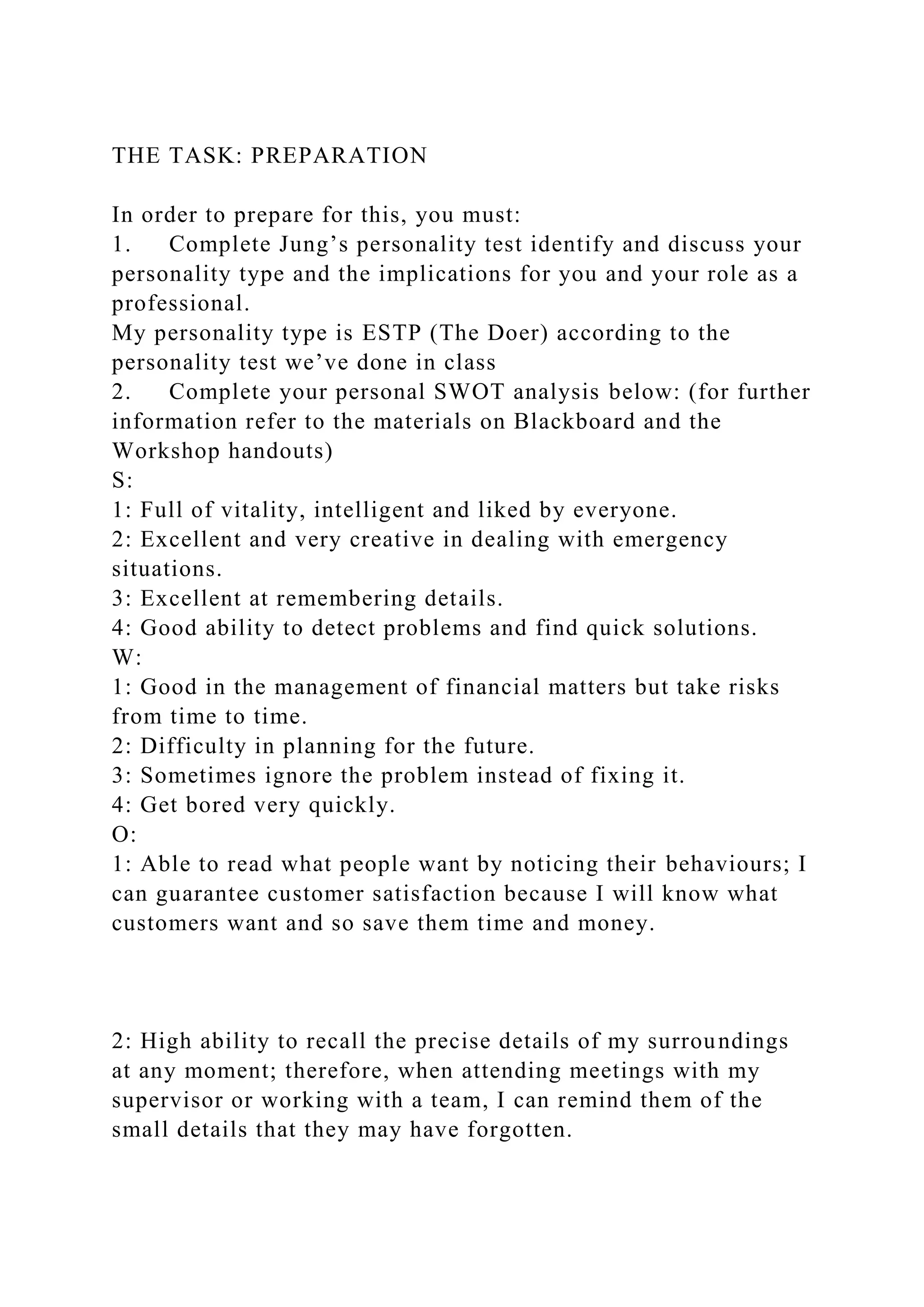
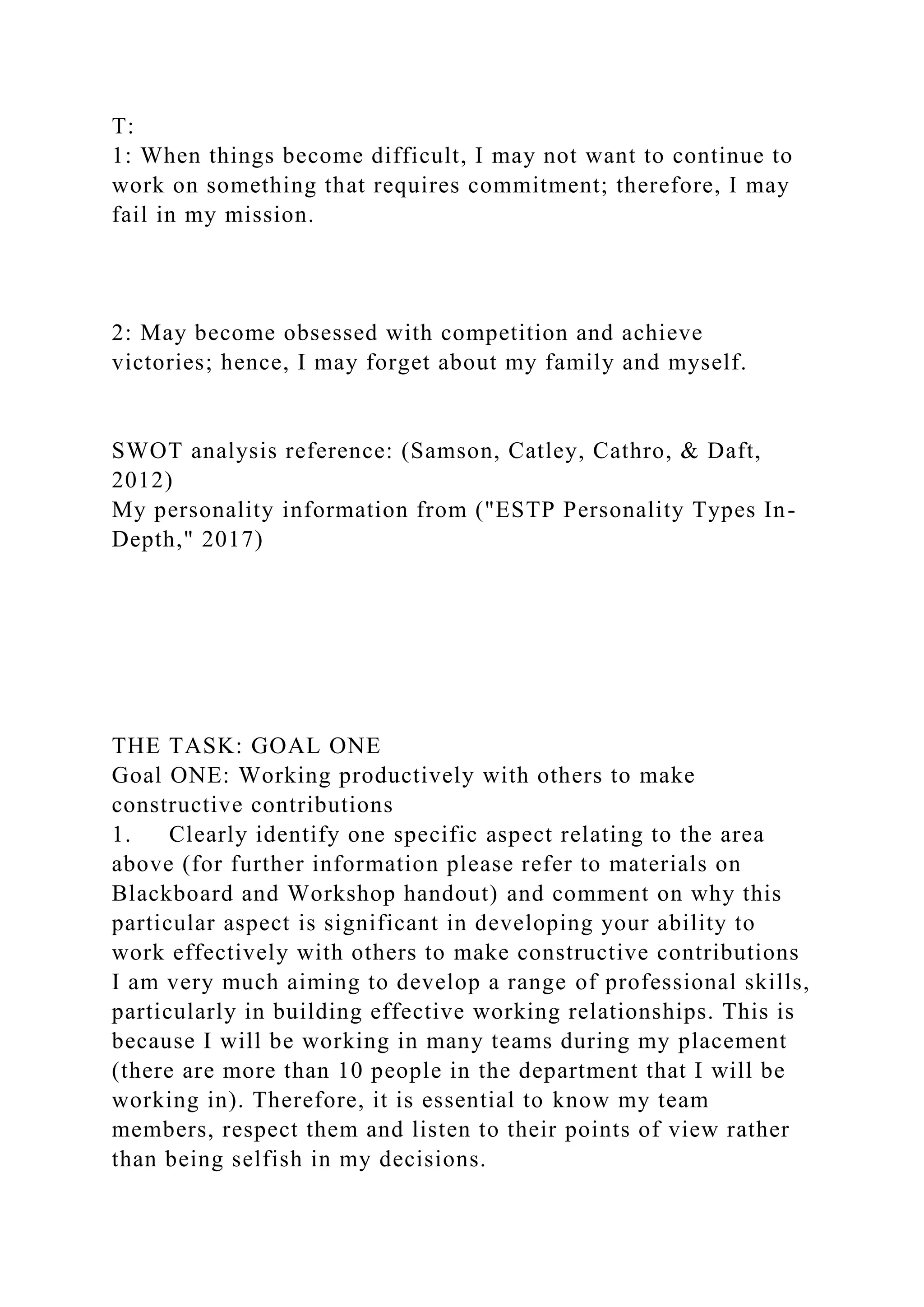
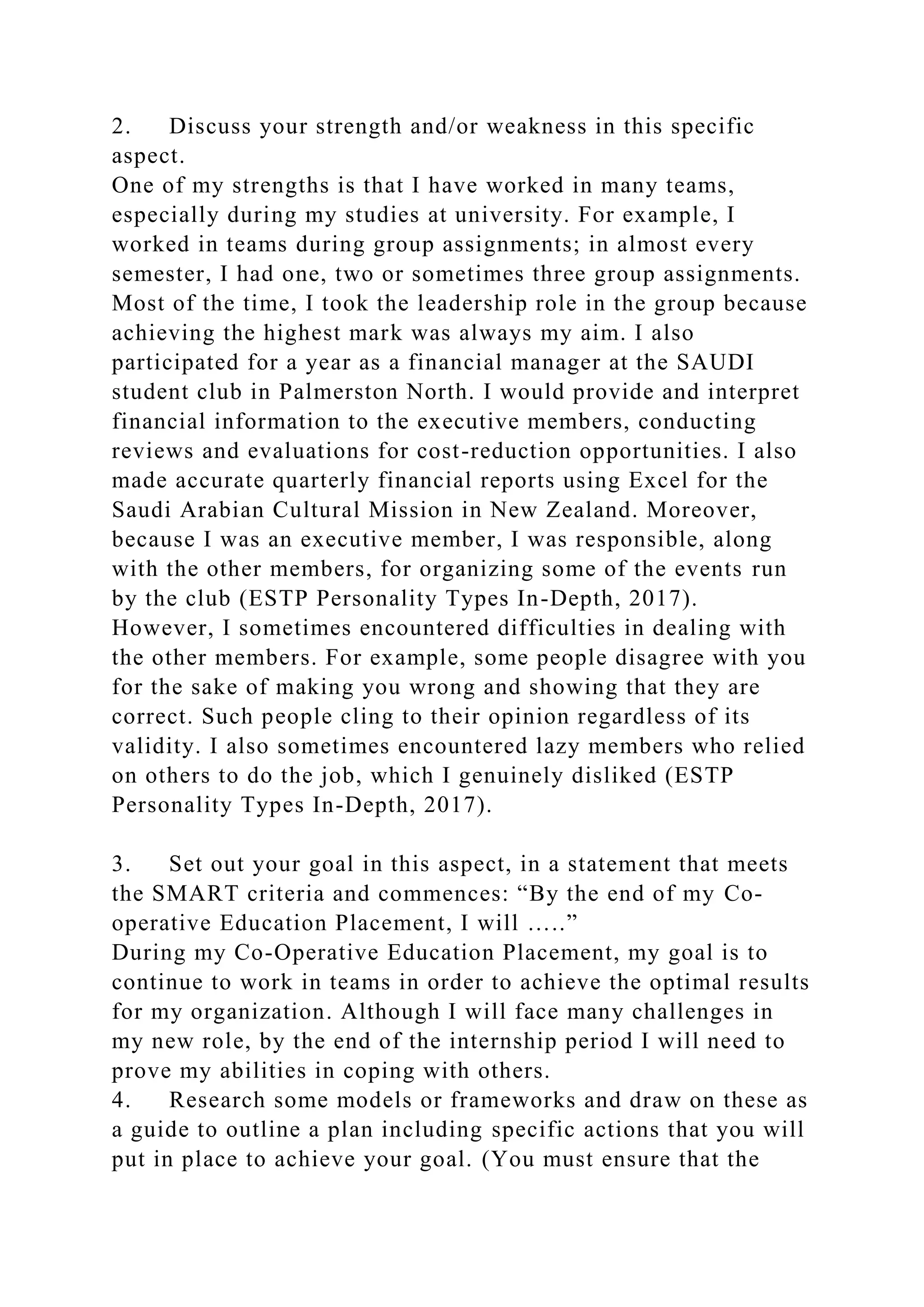
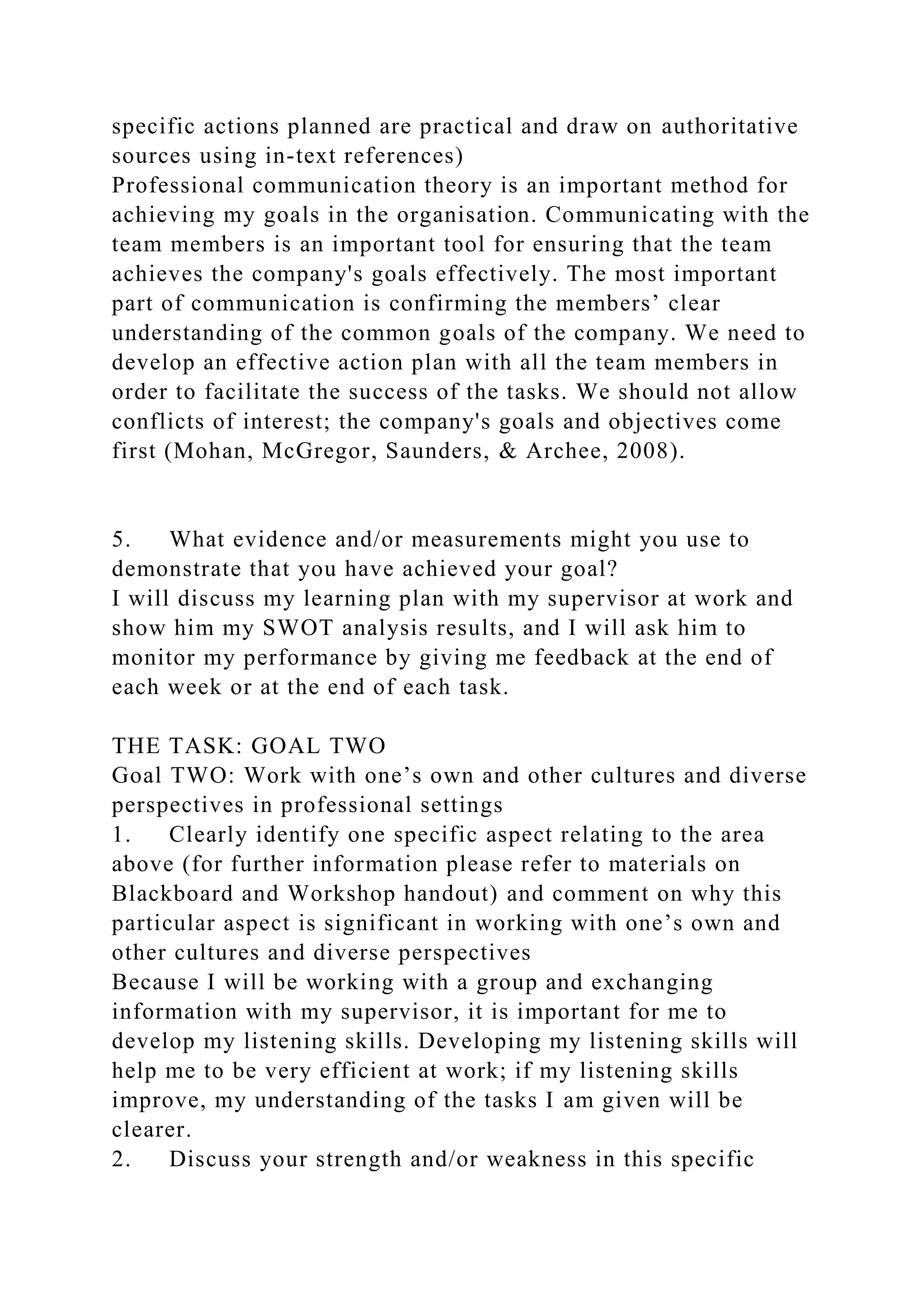
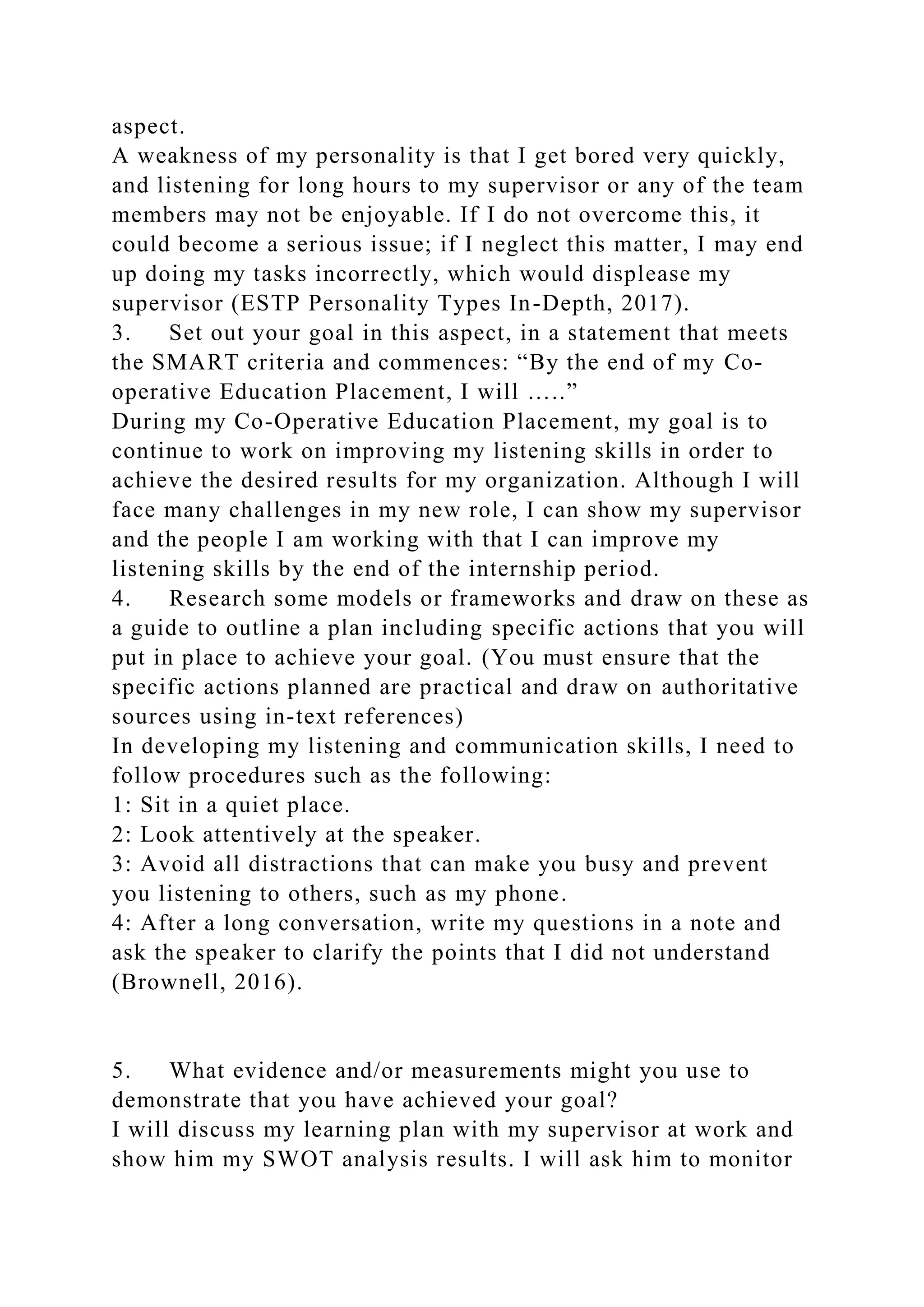

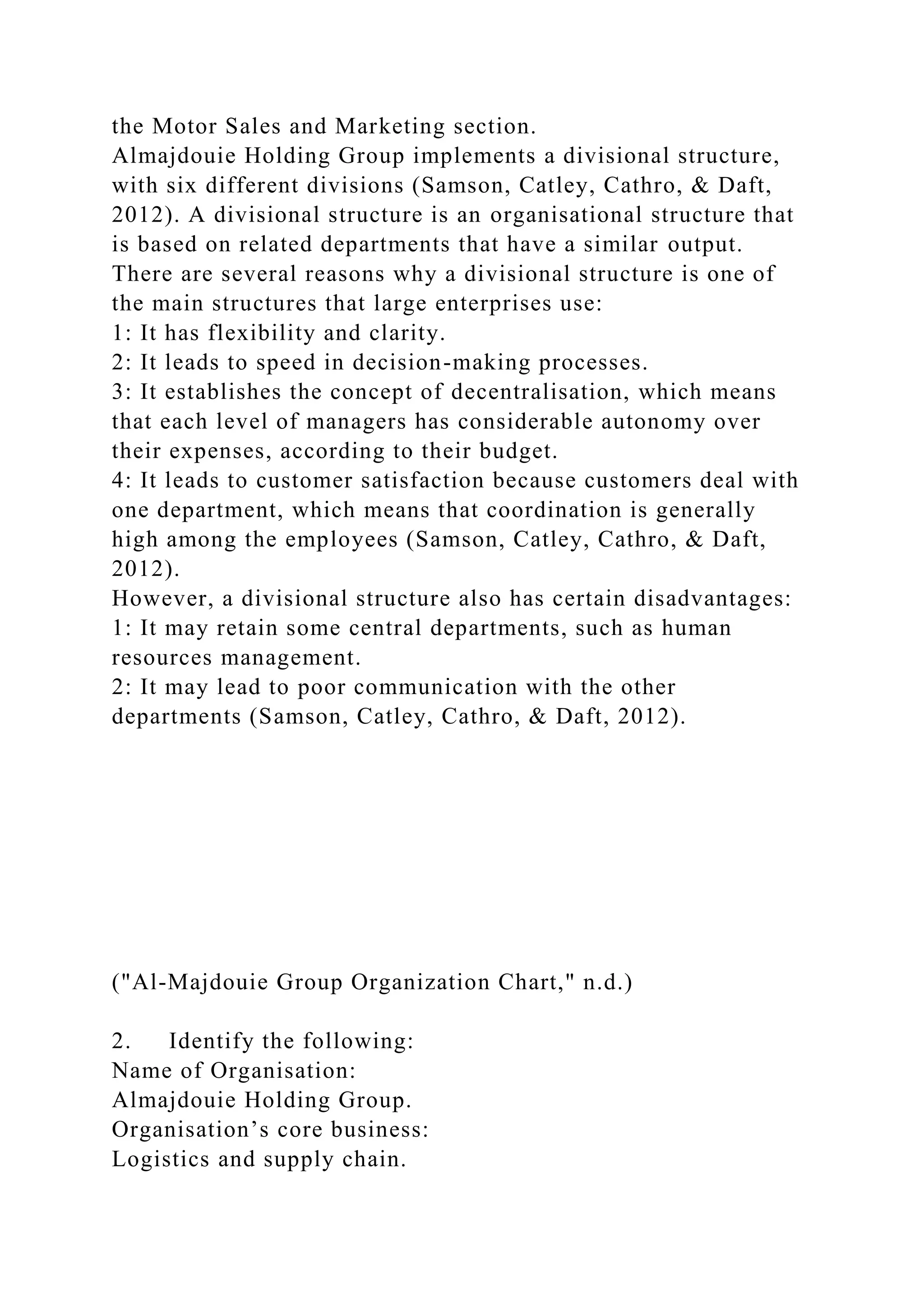

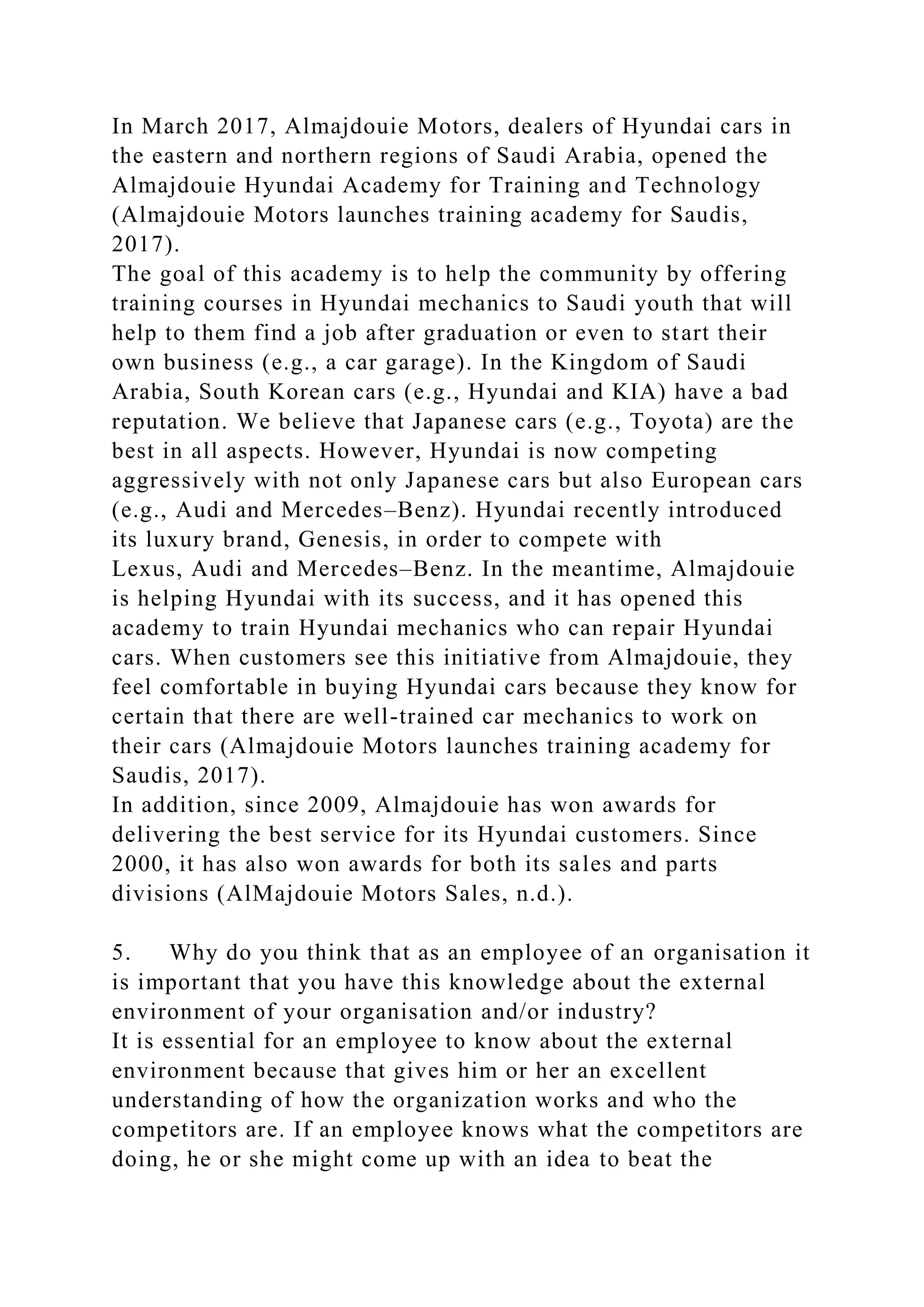
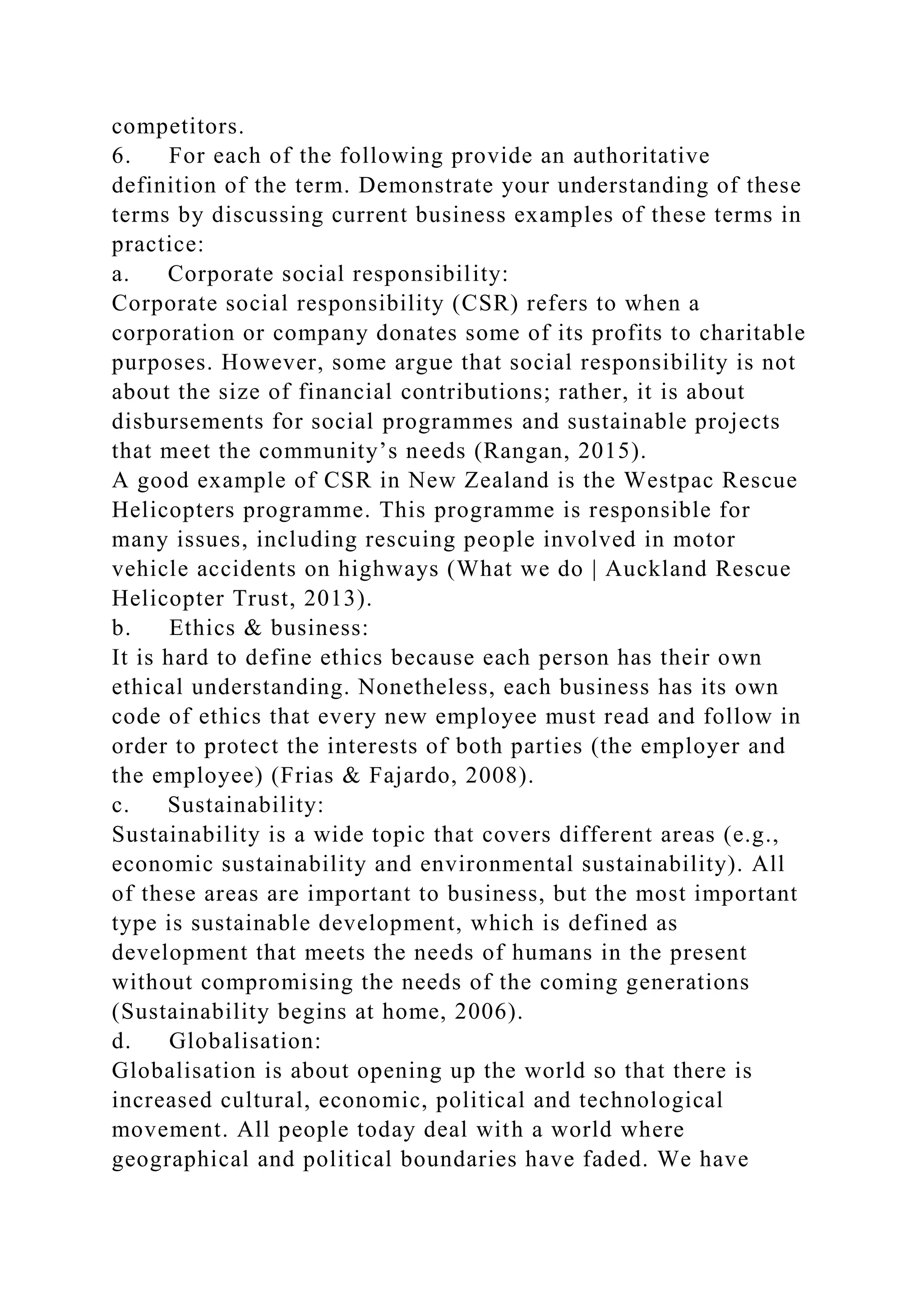
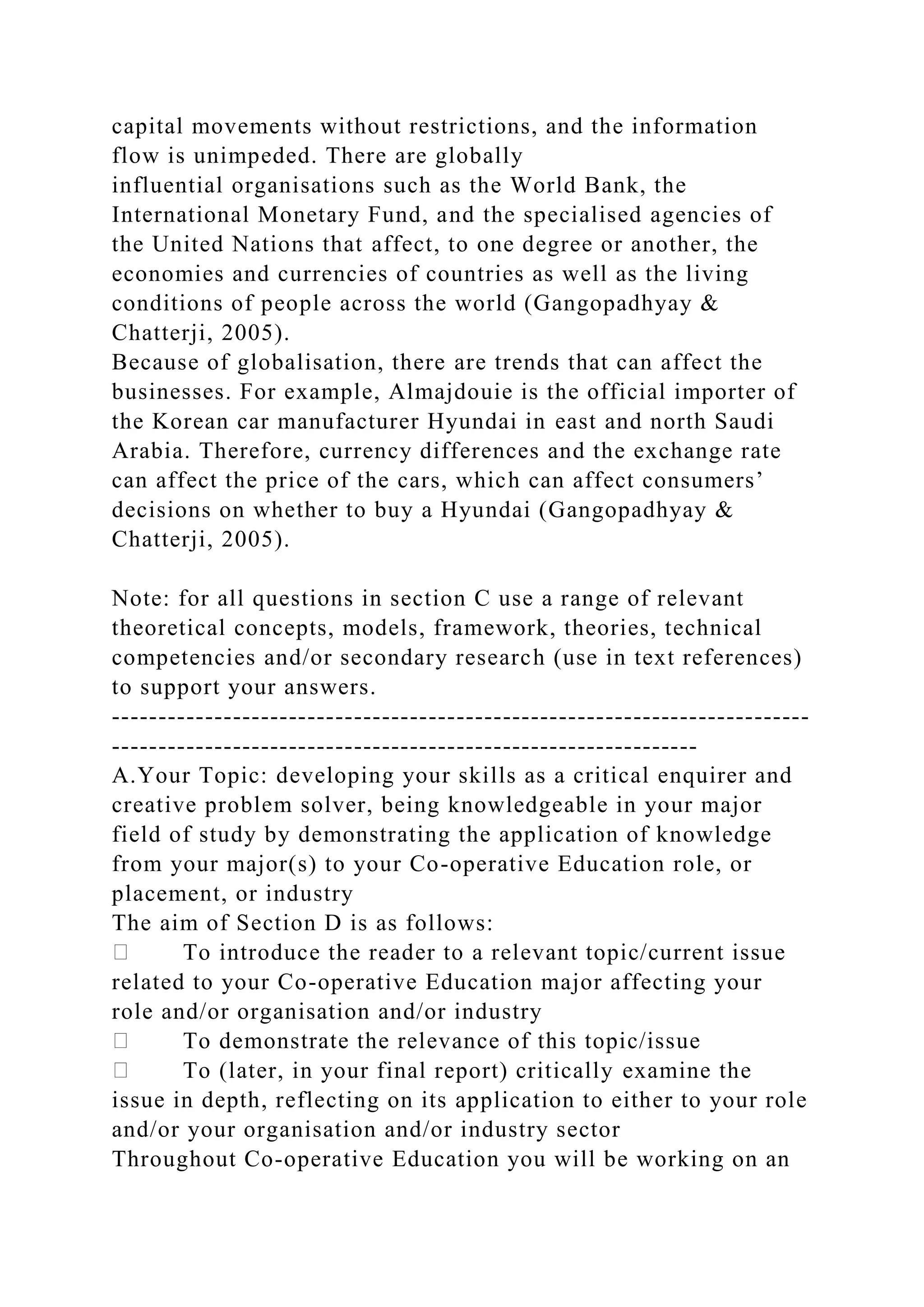
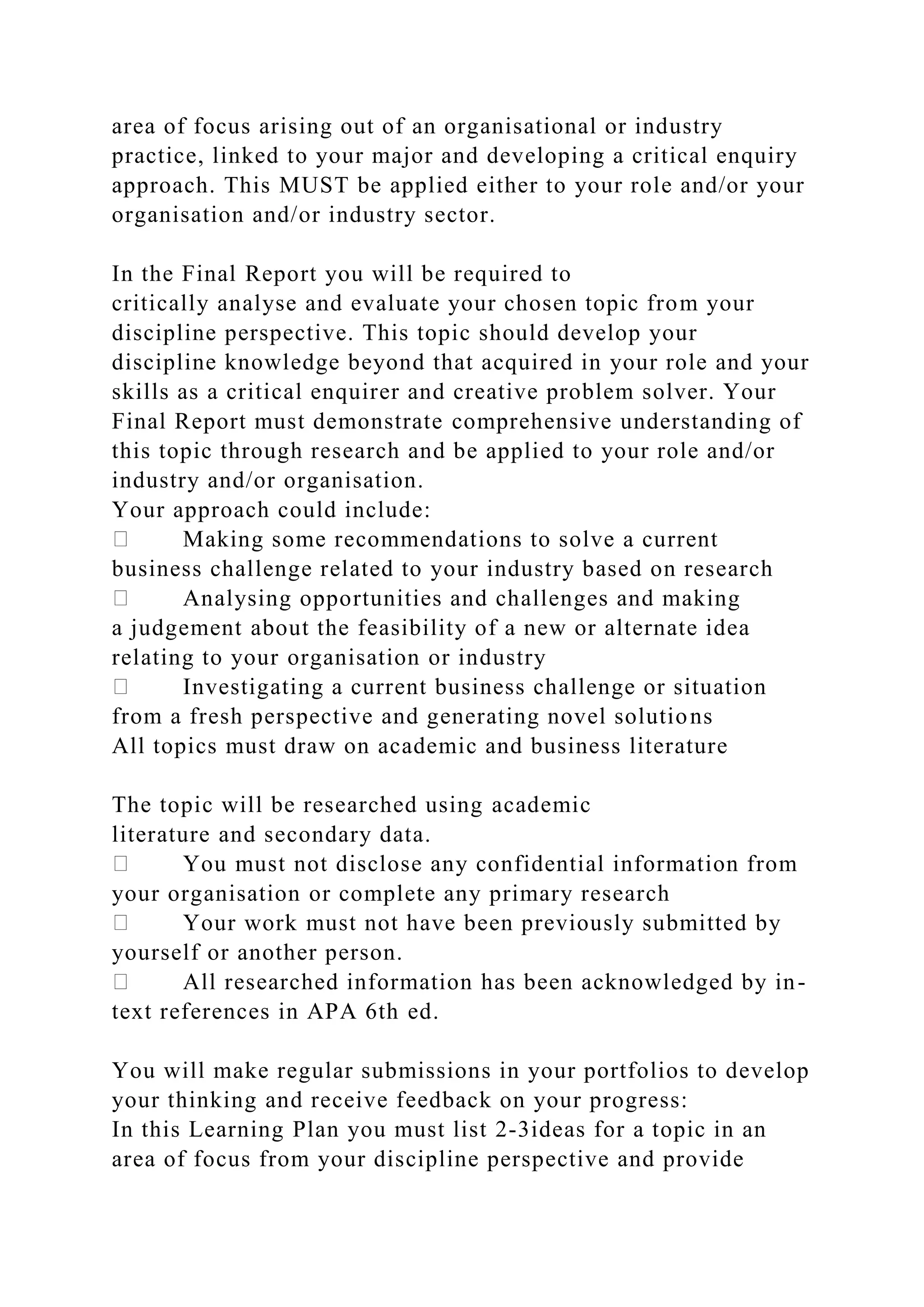


![Retrieved
from https://opinionator.blogs.nytimes.com/2006/10/09/sustaina
bility-begins-at-home/?_r=0
What we do (2013). Auckland Rescue Helicopter Trust.
Retrieved from https://rescuehelicopter.org.nz/what-we-do
---------------------------------------------------------------------------
-----------------------------------
Teacher feedback:
( Please find attached feedback from your Intake 1 2017
Learning Plan. The feedback includes comments inserted into
the Learning Plan and the Learning Plan Marking Criteria. You
will have been given specific feedback – this should be your
primary guide in preparing your Portfolio 1 and 2. When you
download and start working on the Portfolio templates you need
to respond to this feedback as directed. You should now be
documenting concrete examples and experiences to provide a
record of your CP and a foundation for your critical reflection.
You must continue to find, read and analyse relevant literature
for your chosen research topic as this is a key part of Portfolio
1, this should not be left until the last minute! In the section
“Your Professional Skills” you should make sure that you: • try
and focus on one strength and one weakness in each • clearly
define your strengths and weaknesses and link these to the
aspect you have chosen • have action steps that are simple, clear
and practical • answer the question “did these steps actually
help me improve?” in the section on progress LG5. If you find
that steps you have identified are not working you can change
them – that is part of the reflection process If you wish to apply
for a Reconsideration of Grade, you must do so by 5pm,
Thursday 30 March 2017 using the form that you will find on
Blackboard in the Course Information folder, see page 13 of the
Study Guide. Please email your application to [email protected]
Your Portfolio 1 is due 9am, Monday 10 April 2017. Thank
you )](https://image.slidesharecdn.com/learningplanoverviewthelearningplanispartoftheacadem-221026123404-6b9a4957/75/Learning-PlanOverviewThe-Learning-Plan-is-part-of-the-academ-docx-20-2048.jpg)
